#29 March 1798
Text




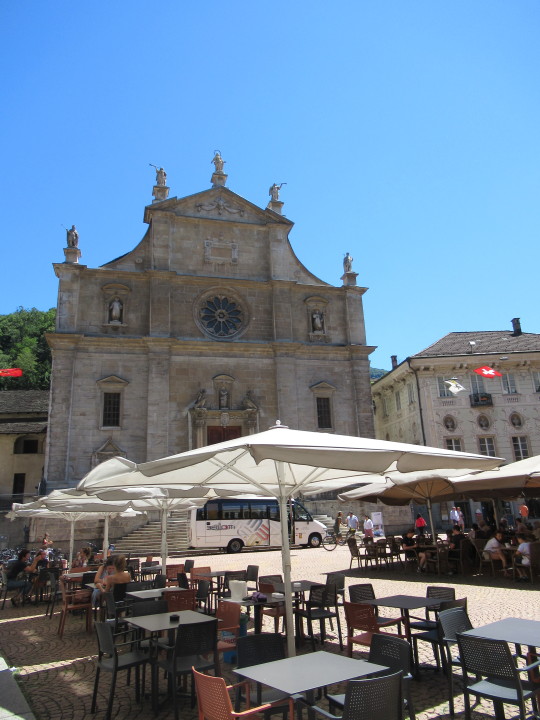









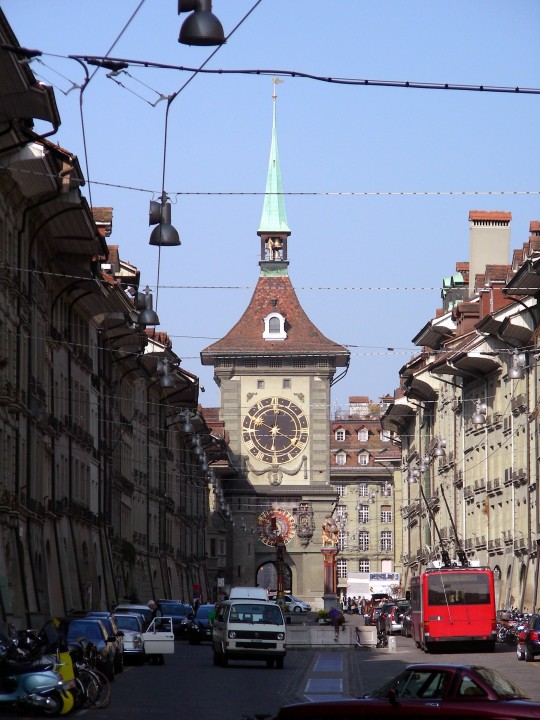



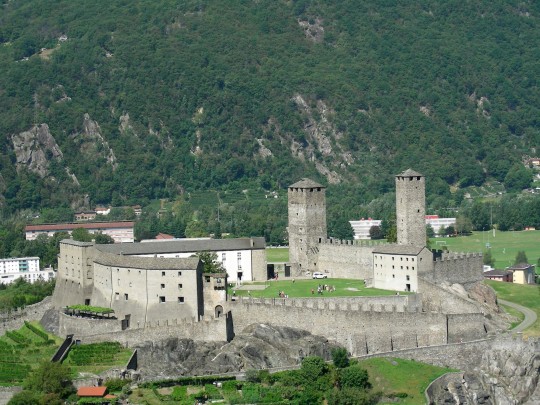

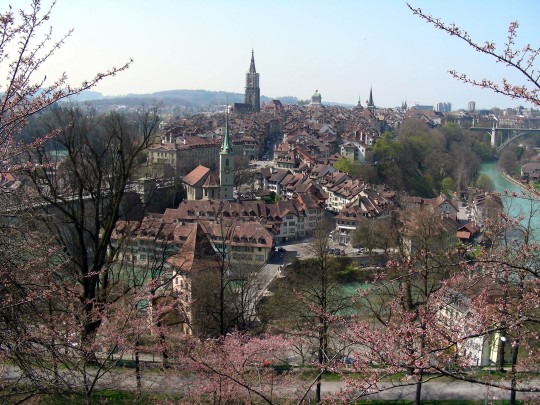









The Republic of Switzerland was formed on March 29, 1798.
#Republic of Switzerland#formed#29 March 1798#anniversary#cityscape#Swiss history#Luzern#Lucerne#Schweiz#original photography#landscape#countryside#River Reuss#Kapellbrücke#Rigi#Stanserhorn#Lake Lucerne#Vierwaldstättersee#Bern#Berner Münster#Bundeshaus#River Aare#Federal Palace of Switzerland#Mount Pilatus#Seebodenalp#Castel Grande#Bellinzona#Klewenalp#Swiss Alps#travel
2 notes
·
View notes
Note
Idk if you've been asked this before or not but did Ham or his family have any pets?
During the war he had a bay horse named Peacock, as mentioned in a receipt from John C. Hummel, [15 August 1799];
“Recd. Trenton August 15th. 1799 of General Hamilton by the hands of Abraham Hunt One Hundred and Twenty Dollars in full for my Bay Horse Peacock—Warranted sound.”
(source)

And then mentioned in the The Intimate Life of Alexander Hamilton by Allan McLane Hamilton, Hamilton paid for what was likely a hunting dog, and named her “Old Peggy” [May 2, 1798];
“Hamilton paid for his fowling-piece and ‘‘old Peggy’’ (probably a dog) on May 2, 1798, the sum of $20.”
(source)
Colonial dogs were often used for hunting, with breeds like; hounds, bulldogs, mastiffs, pointers, setters, spaniels, terriers, etc. Smaller breeds were known as “comfort dogs”, or just true pets, and were owned by women and the elderly as companions.
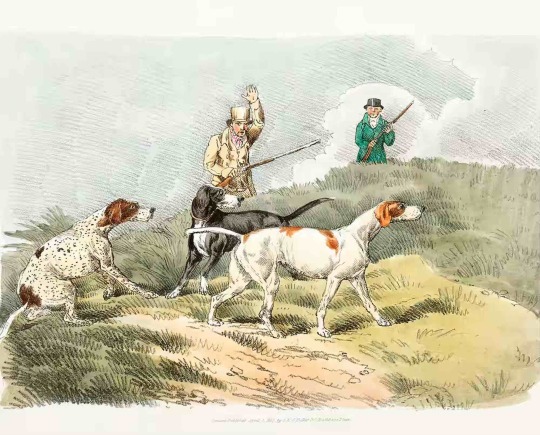
Their second child, and eldest daughter, Angelica Hamilton, also had three or four peroquets. It is said they were meant to console her due to her failing mental health after her eldest brothers, Philip Hamilton's, death just the year prior. But nothing confirms this, and they very well could have just been intended as house pets. As Hamilton says she was very fond of them in a letter to Charles Cotesworth Pinckney, [29 December, 1802];
“My daughter adds another request, which is for three or four of your peroquets. She is very fond of birds.”
(source)
A few months after, Pinckney replied, [6 March, 1803];
“I will endeavour to obtain some Peroquets for Miss Hamilton; I have not seen any for some years; ours are the large kind, by no means equal in beauty to the small african species.”
(source)
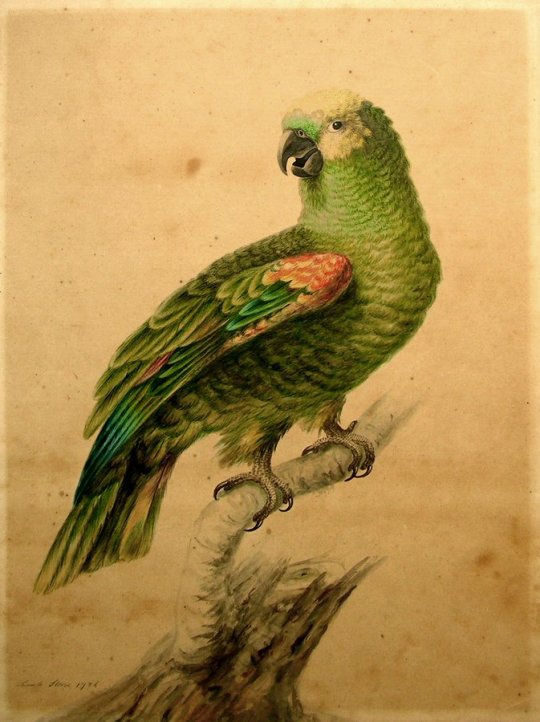
And then, Hamilton seems to have owned a horse named Riddle, as he is briefly mentioned about having a sprained ankle on one of his hind legs in a letter From Alexander Hamilton to Elizabeth Hamilton, [1803];
“I arrived here, my beloved, about five this afternoon. According to my first day’s journey, I ought now to be much further advanced. But some how Riddle sprained the ancle of one of his hind legs, which very much retarded my progress to day. By care and indulgence, he is much better this Evening; so that I count upon being able to reach Albany with him early on Wednesday morning.”
(source)
I'm sure he had plenty more throughout his life, but these are what I known.
#amrev#american history#american revolution#alexander hamilton#historical alexander hamilton#history#hamilton family#angelica hamilton#queries#sincerely anonymous#cicero's history lessons
51 notes
·
View notes
Photo

Let’s talk about the next 20 years. But before we do that, let’s reflect on what happened 15 years and 250 years ago. On March 23, 2023, Pluto will move into Aquarius. It has been in Capricorn for the last 15 years. The last time Pluto was in Aquarius was from 1776 to 1798. 1776 when our country was in its infancy and The Declaration of Independence was signed. In 1777 the first Stars and Stripes flag was introduced completing the unity of the United States of America and it was the beginning of movements abolishing slavery. The US is entering a Pluto return. Why is this important? Most don’t know much about Pluto so let’s review what Pluto represents astrologically. Pluto is the planet of death and rebirth. It represents transformation. It also represents shared finances and sexuality. It’s the breakdown and rebuild of societal structures and is a generational planet with its larger impacts on society as a whole. Now let’s review Aquarius. Aquarius represents the collective and our community on one side but on the flip side it represents isolation. It’s the- I love you all but leave me alone sign. Aquarius is a fixed and stubborn energy. So here’s the thing, being stubborn isn’t gonna work under Pluto. It will break it all down and destroy everything in its path. It’s the Tower card in the Tarot deck. So what does this all mean? Let’s first reflect on when Pluto entered structured Capricorn in 2008. What did we see? The first financial crisis and recession in our most recent history, the housing market crashed and we elected our first black President, just to name a few. Now, Pluto has been hanging out at the critical 29° mark in Capricorn. It’s been doing a review of everything that’s gone down in the last 15 years and we’re really seeing it in the news. The financial system is taking a hit. Banks are going bankrupt once again. (Continued in comments) https://www.instagram.com/p/CpxUdeegNOl/?igshid=NGJjMDIxMWI=
3 notes
·
View notes
Text
Holidays 3.29
Holidays
Alchemy Day
Alder Day (French Republic)
Barthélemy Boganda Day (Central African Republic)
Borrowed Days begin (Calendar legend held that March stole 3 days from April; England, Ireland, Scotland)
Britney Day (San Francisco)
Commemoration of Boganda (Central African Republic)
Commemoration of the 1947 Rebellion (a.k.a. Martyrs’ Day; Madagascar)
Day of the Young Combatant (Chile)
Declaw Awareness Day
Food Chain Day
Good Deeds Day
International Day of Solidarity with Haiti
International Day of the Landless
International Mermaid Day
Juenger Day (Germany)
Knights of Columbus Day
Love the Children Day (Texas)
Martyrs’ Day (Madagascar)
Memorial Day (Malagasy Republic)
Mule Day (Columbia, Tennessee)
National Governance Professionals Day
National Mom and Pop Business Owners Day
National Nevada Day
National Vietnam War Veterans Day
Niagara Falls Runs Dry Day
PayDay It Forward Day
Phagwah (Suriname)
Piano Day [88th Day of the Year]
Smoke and Mirrors Day (a.k.a. Festival of Smoke and Mirrors)
Swedish Colonial Day (Delaware)
Vesta Asteroid Day
World Marbles Day
Youth Day (Taiwan)
Food & Drink Celebrations
Coca-Cola Day
Gnocchi Day (Argentina)
Lemon Chiffon Cake Day
National Pita Day
5th & Last Friday in March
Fry Day (Pastafarian; Fritism) [Every Friday]
National Cleavage Day (South Africa) [Last Friday in March or 1st Friday in April]
No Homework Day [Last Friday]
Tater Day Festival begins (Kentucky) [Last Friday; ends Monday]
Wear a Hat Day (UK) [Last Friday]
Independence & Related Days
Barotseland (Declared; 2012) [unrecognized]
Helvetian Republic (Proclaimed; 1798)
Punjab Annexation (by the British; 1849)
Festivals Beginning March 29, 2024
Charleston Bluegrass Festival (Charleston, South Carolina) [thru 3.30]
Cherry Blossom Festival (Vancouver, Canada) [thru 4.25]
WonderCon (Anaheim, California) [thru 3.31]
Feast Days
Adolfo Müller-Ury (Artology)
Aequinoctium Vernum, Day 3 (Pagan)
Altoona Rooney (Muppetism)
Armogastes, Archinimus, and Satur (Christian; Martyrs)
Artemis Soteira (Goddess Artemis Festival; Ancient Greece)
Berthold (Christian; Saint)
Celsus (Positivist; Saint)
Cocktail Hour Every Hour Day (Pastafarian)
Cyril (Christian; Martyr)
A Day of Redress (Shamanism)
The Delphinaia (Festival to Apollo; Ancient Greece)
Egg Lore Day (Starza Pagan Book of Days)
Erik Satie Day (Church of the SubGenius; Saint)
Eugene Onegin, by Pyotr Ilyich Tchaikovsky (Opera; 1879)
Eustace of Luxeuil (Christian; Saint)
Expulsion of the Demons of Bad Luck (Pagan)
Festival of Ishtar (Babylonia)
Festival of Smoke and Mirrors
Gundleus, a Welsh King (Christian; Saint)
Gwladys (Christian; Saint)
Gwynllyw (Christian; Saint)
Hans Nielsen Hauge (Lutheran)
Imam Mahdi Day (Iran)
Jonas, Barachisus, and companions (Christian; Martyrs)
Johann Moritz Rugendas (Artology)
John Keble (commemoration, Anglicanism)
John Russell (Artology)
Jo Nesbø (Writerism)
Ludolf (Christian; Saint)
Mark of Arethusa, in Syria (Christian; Saint)
Masquerade Ritual Day (Bobo People of Africa; Everyday Wicca)
Rupert (Christian; Saint)
Christian Liturgical Holidays
Friday before Easter (a.k.a. ...
Goede Vrijdag (Suriname)
Good Friday
Jour Chômé d’Usage (French Guiana, Guadeloupe)
Långfredagen (Sweden)
Lord’s Evening Meal (Jehovah’s Witness) [Nisan 14]
National Hot Cross Buns Day
Paixão de Cristo (Brazil)
Passion Friday
Procession of the Mysteries (Italy)
Semana de Turismo (Uruguay)
Via Crusus Way (Philippines)
Viernes Santo (Cuba, Spain)
World Marbles Day
Hebrew Calendar Holidays [Begins at Sundown Day Before]
Shabbat Parah (Sabbath of the Red Heifer: שבת פרה) [19-20 Adair II]
Lucky & Unlucky Days
Sakimake (先負 Japan) [Bad luck in the morning, good luck in the afternoon.]
Unfortunate Day (Pagan) [22 of 57]
Premieres
The Birthday Party (Oswald the Lucky Rabbit Cartoon; 1937)
Black Magic Woman, by Santana (Song; 1968)
Blow by Blow, by Jeff Beck (Album; 1975)
Breakfast in America, by Supertramp (Album; 1979)
Career Opportunities (Film; 1991)
Death on the Riviera, by John Bude (Novel; 1952)
Death to Smoochy (Film; 2002)
Desperately Seeking Susan (Film; 1985)
Fishing Tackler (Noveltoons Cartoon; 1957)
Fistic Mystic (WB LT Cartoon; 1969)
Ghostbusters: Frozen Empire (Film; 2024)
Give and Tyke (MGM Cartoon; 1957)
Godzilla x. Kong: The New Empire (Film; 2024)
Hare-Way to the Stars (WB LT Cartoon; 1958)
The King and I (Broadway Musical; 1951)
Little Beau Pepe (WB MM Cartoon; 1952)
Lust for Life, by Irving Stone (Biography; 1934)
Male Bags or Homely Are the Brave (Rocky & Bullwinkle Cartoon, S6, Ep. 358; 1965)
Mother Hub-Hubba-Hubbard (Color Rhapsody Cartoon; 1947)
My Old Kentucky Home (Mighty Mouse Cartoon; 1946)
Piano Concerto No. 2 in Bb, by Ludwig van Beethoven (Piano Concerto; 1795)
Please Don't Eat the Daisies, by Jean Kerr (Novel; 1957)
Ready Player One (Film; 2018)
Rogues’ Gallery or Hole That Line-Up (Rocky & Bullwinkle Cartoon, S6, Ep. 357; 1965)
The Rookie (Film; 2003)
Room 237 (Documentary Film; 2013)
Some Like It Hot (Film; 1959)
The Story of Vernon and Irene Castle (Film; 1939)
Umbrella, by Rihanna (Song; 2007)
When We All Fall Asleep, Where Do We Go?, by Billie Eilish (Album; 2019)
Today’s Name Days
Berthold, Helmut, Ludolf (Austria)
Bertold, Eustazije, Jona (Croatia)
Taťána (Czech Republic)
Jonas (Denmark)
Joakim, Joonas, Kimmo (Estonia)
Joni, Jonne, Jonni, Joona, Joonas, Jouni (Finland)
Gladys, Gwladys (France)
Berthold, Helmut, Ludolf (Germany)
Auguszta (Hungary)
Secondo (Italy)
Agija, Aldonis, Ilma, Ranta (Latvia)
Almantė, Bertoldas, Manvydas (Lithuania)
Jonas, Jonatan (Norway)
Cyryl, Czcirad, Eustachiusz, Eustachy, Ostap, Wiktoryn (Poland)
Denia, Marcu (Romania)
Miroslav (Slovakia)
Eustasio (Spain)
Jens, Jonas (Sweden)
Berthold, Fletcher, Pearl, Pearle, Pearlie, Pearline, Perla (USA)
Today is Also…
Day of Year: Day 89 of 2024; 277 days remaining in the year
ISO: Day 5 of week 13 of 2024
Celtic Tree Calendar: Fearn (Alder) [Day 13 of 28]
Chinese: Month 2 (Ding-Mao), Day 20 (Red-Chen)
Chinese Year of the: Dragon 4722 (until January 29, 2025)
Hebrew: 19 Adair II 5784
Islamic: 19 Ramadan 1445
J Cal: 29 Green; Extraday [29 of 30]
Julian: 16 March 2024
Moon: 82%: Waning Gibbous
Positivist: 5 Archimedes (4th Month) [Galen]
Runic Half Month: Ehwaz (Horse) [Day 4 of 15]
Season: Spring (Day 11 of 92)
Week: Last Week of March
Zodiac: Aries (Day 9 of 31)
0 notes
Text
Holidays 3.29
Holidays
Alchemy Day
Alder Day (French Republic)
Barthélemy Boganda Day (Central African Republic)
Borrowed Days begin (Calendar legend held that March stole 3 days from April; England, Ireland, Scotland)
Britney Day (San Francisco)
Commemoration of Boganda (Central African Republic)
Commemoration of the 1947 Rebellion (a.k.a. Martyrs’ Day; Madagascar)
Day of the Young Combatant (Chile)
Declaw Awareness Day
Food Chain Day
Good Deeds Day
International Day of Solidarity with Haiti
International Day of the Landless
International Mermaid Day
Juenger Day (Germany)
Knights of Columbus Day
Love the Children Day (Texas)
Martyrs’ Day (Madagascar)
Memorial Day (Malagasy Republic)
Mule Day (Columbia, Tennessee)
National Governance Professionals Day
National Mom and Pop Business Owners Day
National Nevada Day
National Vietnam War Veterans Day
Niagara Falls Runs Dry Day
PayDay It Forward Day
Phagwah (Suriname)
Piano Day [88th Day of the Year]
Smoke and Mirrors Day (a.k.a. Festival of Smoke and Mirrors)
Swedish Colonial Day (Delaware)
Vesta Asteroid Day
World Marbles Day
Youth Day (Taiwan)
Food & Drink Celebrations
Coca-Cola Day
Gnocchi Day (Argentina)
Lemon Chiffon Cake Day
National Pita Day
5th & Last Friday in March
Fry Day (Pastafarian; Fritism) [Every Friday]
National Cleavage Day (South Africa) [Last Friday in March or 1st Friday in April]
No Homework Day [Last Friday]
Tater Day Festival begins (Kentucky) [Last Friday; ends Monday]
Wear a Hat Day (UK) [Last Friday]
Independence & Related Days
Barotseland (Declared; 2012) [unrecognized]
Helvetian Republic (Proclaimed; 1798)
Punjab Annexation (by the British; 1849)
Festivals Beginning March 29, 2024
Charleston Bluegrass Festival (Charleston, South Carolina) [thru 3.30]
Cherry Blossom Festival (Vancouver, Canada) [thru 4.25]
WonderCon (Anaheim, California) [thru 3.31]
Feast Days
Adolfo Müller-Ury (Artology)
Aequinoctium Vernum, Day 3 (Pagan)
Altoona Rooney (Muppetism)
Armogastes, Archinimus, and Satur (Christian; Martyrs)
Artemis Soteira (Goddess Artemis Festival; Ancient Greece)
Berthold (Christian; Saint)
Celsus (Positivist; Saint)
Cocktail Hour Every Hour Day (Pastafarian)
Cyril (Christian; Martyr)
A Day of Redress (Shamanism)
The Delphinaia (Festival to Apollo; Ancient Greece)
Egg Lore Day (Starza Pagan Book of Days)
Erik Satie Day (Church of the SubGenius; Saint)
Eugene Onegin, by Pyotr Ilyich Tchaikovsky (Opera; 1879)
Eustace of Luxeuil (Christian; Saint)
Expulsion of the Demons of Bad Luck (Pagan)
Festival of Ishtar (Babylonia)
Festival of Smoke and Mirrors
Gundleus, a Welsh King (Christian; Saint)
Gwladys (Christian; Saint)
Gwynllyw (Christian; Saint)
Hans Nielsen Hauge (Lutheran)
Imam Mahdi Day (Iran)
Jonas, Barachisus, and companions (Christian; Martyrs)
Johann Moritz Rugendas (Artology)
John Keble (commemoration, Anglicanism)
John Russell (Artology)
Jo Nesbø (Writerism)
Ludolf (Christian; Saint)
Mark of Arethusa, in Syria (Christian; Saint)
Masquerade Ritual Day (Bobo People of Africa; Everyday Wicca)
Rupert (Christian; Saint)
Christian Liturgical Holidays
Friday before Easter (a.k.a. ...
Goede Vrijdag (Suriname)
Good Friday
Jour Chômé d’Usage (French Guiana, Guadeloupe)
Långfredagen (Sweden)
Lord’s Evening Meal (Jehovah’s Witness) [Nisan 14]
National Hot Cross Buns Day
Paixão de Cristo (Brazil)
Passion Friday
Procession of the Mysteries (Italy)
Semana de Turismo (Uruguay)
Via Crusus Way (Philippines)
Viernes Santo (Cuba, Spain)
World Marbles Day
Hebrew Calendar Holidays [Begins at Sundown Day Before]
Shabbat Parah (Sabbath of the Red Heifer: שבת פרה) [19-20 Adair II]
Lucky & Unlucky Days
Sakimake (先負 Japan) [Bad luck in the morning, good luck in the afternoon.]
Unfortunate Day (Pagan) [22 of 57]
Premieres
The Birthday Party (Oswald the Lucky Rabbit Cartoon; 1937)
Black Magic Woman, by Santana (Song; 1968)
Blow by Blow, by Jeff Beck (Album; 1975)
Breakfast in America, by Supertramp (Album; 1979)
Career Opportunities (Film; 1991)
Death on the Riviera, by John Bude (Novel; 1952)
Death to Smoochy (Film; 2002)
Desperately Seeking Susan (Film; 1985)
Fishing Tackler (Noveltoons Cartoon; 1957)
Fistic Mystic (WB LT Cartoon; 1969)
Ghostbusters: Frozen Empire (Film; 2024)
Give and Tyke (MGM Cartoon; 1957)
Godzilla x. Kong: The New Empire (Film; 2024)
Hare-Way to the Stars (WB LT Cartoon; 1958)
The King and I (Broadway Musical; 1951)
Little Beau Pepe (WB MM Cartoon; 1952)
Lust for Life, by Irving Stone (Biography; 1934)
Male Bags or Homely Are the Brave (Rocky & Bullwinkle Cartoon, S6, Ep. 358; 1965)
Mother Hub-Hubba-Hubbard (Color Rhapsody Cartoon; 1947)
My Old Kentucky Home (Mighty Mouse Cartoon; 1946)
Piano Concerto No. 2 in Bb, by Ludwig van Beethoven (Piano Concerto; 1795)
Please Don't Eat the Daisies, by Jean Kerr (Novel; 1957)
Ready Player One (Film; 2018)
Rogues’ Gallery or Hole That Line-Up (Rocky & Bullwinkle Cartoon, S6, Ep. 357; 1965)
The Rookie (Film; 2003)
Room 237 (Documentary Film; 2013)
Some Like It Hot (Film; 1959)
The Story of Vernon and Irene Castle (Film; 1939)
Umbrella, by Rihanna (Song; 2007)
When We All Fall Asleep, Where Do We Go?, by Billie Eilish (Album; 2019)
Today’s Name Days
Berthold, Helmut, Ludolf (Austria)
Bertold, Eustazije, Jona (Croatia)
Taťána (Czech Republic)
Jonas (Denmark)
Joakim, Joonas, Kimmo (Estonia)
Joni, Jonne, Jonni, Joona, Joonas, Jouni (Finland)
Gladys, Gwladys (France)
Berthold, Helmut, Ludolf (Germany)
Auguszta (Hungary)
Secondo (Italy)
Agija, Aldonis, Ilma, Ranta (Latvia)
Almantė, Bertoldas, Manvydas (Lithuania)
Jonas, Jonatan (Norway)
Cyryl, Czcirad, Eustachiusz, Eustachy, Ostap, Wiktoryn (Poland)
Denia, Marcu (Romania)
Miroslav (Slovakia)
Eustasio (Spain)
Jens, Jonas (Sweden)
Berthold, Fletcher, Pearl, Pearle, Pearlie, Pearline, Perla (USA)
Today is Also…
Day of Year: Day 89 of 2024; 277 days remaining in the year
ISO: Day 5 of week 13 of 2024
Celtic Tree Calendar: Fearn (Alder) [Day 13 of 28]
Chinese: Month 2 (Ding-Mao), Day 20 (Red-Chen)
Chinese Year of the: Dragon 4722 (until January 29, 2025)
Hebrew: 19 Adair II 5784
Islamic: 19 Ramadan 1445
J Cal: 29 Green; Extraday [29 of 30]
Julian: 16 March 2024
Moon: 82%: Waning Gibbous
Positivist: 5 Archimedes (4th Month) [Galen]
Runic Half Month: Ehwaz (Horse) [Day 4 of 15]
Season: Spring (Day 11 of 92)
Week: Last Week of March
Zodiac: Aries (Day 9 of 31)
0 notes
Text
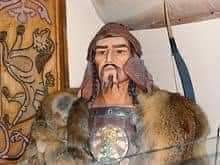
#卍TENGRÎkutUluğBaşBuğAttilahun
5th-century ruler of the Hunnic Empire
"#Atilla" and "Attila the #Hun" redirect here. For other uses, see Attila (disambiguation), Atilla (disambiguation), and Attila the Hun (disambiguation).
#Attila (/əˈtɪlə/, /ˈætələ/;fl. c. 406–453), frequently called Attila the Hun, was the ruler of the Huns from 434 until his death in March 453. He was also the leader of a tribal empire consisting of Huns, Ostrogoths, Alans and Bulgars, among others, in Central and Eastern Europe.
Quick Facts King and chieftain of the Hunnic Empire, Reign ...
During his reign, he was one of the most feared enemies of the Western and Eastern Roman Empires. He crossed the Danubetwice and plundered the Balkans, but was unable to take Constantinople. His unsuccessful campaign in Persia was followed in 441 by an invasion of the Eastern Roman (Byzantine) Empire, the success of which emboldened Attila to invade the West. He also attempted to conquer Roman Gaul (modern France), crossing the Rhine in 451 and marching as far as Aurelianum (Orléans) before being stopped in the Battle of the Catalaunian Plains.
He subsequently invaded Italy, devastating the northern provinces, but was unable to take Rome. He planned for further campaigns against the Romans, but died in 453. After Attila's death, his close adviser, Ardaricof the Gepids, led a Germanic revolt against Hunnic rule, after which the Hunnic Empire quickly collapsed. Attila would live on as a character in Germanic heroic legend.
Appearance and character
BildMór Than's 19th century painting of The Feast of Attila, based on a fragment of Priscus
There is no surviving first-hand account of Attila's appearance, but there is a possible second-hand source provided by Jordanes, who cites a description given by Priscus.
He was a man born into the world to shake the nations, the scourge of all lands, who in some way terrified all mankind by the dreadful rumors noised abroad concerning him. He was haughty in his walk, rolling his eyes hither and thither, so that the power of his proud spirit appeared in the movement of his body. He was indeed a lover of war, yet restrained in action, mighty in counsel, gracious to suppliants and lenient to those who were once received into his protection. Short of stature, with a broad chest and a large head; his eyes were small, his beard thin and sprinkled with grey; and he had a flat nose and swarthy skin, showing evidence of his origin.:182–183
Some scholars have suggested that this description is typically East Asian, because it has all the combined features that fit the physical type of people from Eastern Asia, and Attila's ancestors may have come from there.:202 Other historians also believed that the same descriptions were also evident on some Scythian people.
Etymology
BildA painting of Attila riding a pale horse, by French Romantic artist Eugène Delacroix (1798–1863)
Many scholars have argued that the name Attila derives from East Germanic origin; Attila is formed from the Gothic or Gepidic noun atta, "father", by means of the diminutive suffix -ila, meaning "little father", compare Wulfilafrom wulfs "wolf" and -ila, i.e. "little wolf".:386:29:46The Gothic etymology was first proposed by Jacob and Wilhelm Grimm in the early 19th century.:211 Maenchen-Helfen notes that this derivation of the name "offers neither phonetic nor semantic difficulties",:386 and Gerhard Doerfer notes that the name is simply correct Gothic.:29 Alexander Savelyev and Choongwon Jeong (2020) similarly state that Attila's name "must have been Gothic in origin." The name has sometimes been interpreted as a Germanization of a name of Hunnic origin.:29–32
Other scholars have argued for a Turkic origin of the name. Omeljan Pritsak considered Ἀττίλα (Attíla) a composite title-name which derived from Turkic *es (great, old), and *til (sea, ocean), and the suffix /a/.:444The stressed back syllabic tilassimilated the front member es, so it became *as.:444 It is a nominative, in form of attíl- (< *etsíl < *es tíl) with the meaning "the oceanic, universal ruler".:444 J. J. Mikkola connected it with Turkic āt (name, fame).:216 As another Turkic possibility, H. Althof (1902) considered it was related to Turkish atli (horseman, cavalier), or Turkish at (horse) and dil(tongue).:216 Maenchen-Helfen argues that Pritsak's derivation is "ingenious but for many reasons unacceptable",:387 while dismissing Mikkola's as "too farfetched to be taken seriously".:390 M. Snædal similarly notes that none of these proposals has achieved wide acceptance.:215–216Criticizing the proposals of finding Turkic or other etymologies for Attila, Doerfer notes that King George VI of the United Kingdom had a name of Greek origin, and Süleyman the Magnificent had a name of Arabic origin, yet that does not make them Greeks or Arabs: it is therefore plausible that Attila would have a name not of Hunnic origin.:31-32 Historian Hyun Jin Kim, however, has argued that the Turkic etymology is "more probable".:30
M. Snædal, in a paper that rejects the Germanic derivation but notes the problems with the existing proposed Turkic etymologies, argues that Attila's name could have originated from Turkic-Mongolian at, adyy/agta(gelding, warhorse) and Turkish atli (horseman, cavalier), meaning "possessor of geldings, provider of warhorses".:216–217
Historiography and source
BildFigure of Attila in a museum in Hungary
The historiography of Attila is faced with a major challenge, in that the only complete sources are written in Greek and Latin by the enemies of the Huns. Attila's contemporaries left many testimonials of his life, but only fragments of these remain.:25Priscus was a Byzantine diplomat and historian who wrote in Greek, and he was both a witness to and an actor in the story of Attila, as a member of the embassy of Theodosius II at the Hunnic court in 449. He was obviously biased by his political position, but his writing is a major source for information on the life of Attila, and he is the only person known to have recorded a physical description of him. He wrote a history of the late Roman Empire in eight books covering the period from 430 to 476.
Only fragments of Priscus' work remain. It was cited extensively by 6th-century historians Procopius and Jordanes,:413especially in Jordanes' The Origin and Deeds of the Goths, which contains numerous references to Priscus's history, and it is also an important source of information about the Hunnic empire and its neighbors. He describes the legacy of Attila and the Hunnic people for a century after Attila's death. Marcellinus Comes, a chancellor of Justinianduring the same era, also describes the relations between the Huns and the Eastern Roman Empire.:30
Numerous ecclesiastical writings contain useful but scattered information, sometimes difficult to authenticate or distorted by years of hand-copying between the 6th and 17th centuries. The Hungarian writers of the 12th century wished to portray the Huns in a positive light as their glorious ancestors, and so repressed certain historical elements and added their own legends.:32
The literature and knowledge of the Huns themselves was transmitted orally, by means of epics and chanted poems that were handed down from generation to generation.:354Indirectly, fragments of this oral history have reached us via the literature of the Scandinavians and Germans, neighbors of the Huns who wrote between the 9th and 13th centuries. Attila is a major character in many Medieval epics, such as the Nibelungenlied, as well as various Eddas and sagas.:32:354
Archaeological investigation has uncovered some details about the lifestyle, art, and warfare of the Huns. There are a few traces of battles and sieges, but the tomb of Attila and the location of his capital have not yet been found.:33–37
Early life and background
Main article: Huns
BildHuns in battle with the Alans. An 1870s engraving after a drawing by Johann Nepomuk Geiger (1805–1880 ).
The Huns were a group of Eurasian nomads, appearing from east of the Volga, who migrated further into Western Europec. 370 and built up an enormous empire there. Their main military techniques were mounted archery and javelinthrowing. They were in the process of developing settlements before their arrival in Western Europe, yet the Huns were a society of pastoral warriors:259 whose primary form of nourishment was meat and milk, products of their herds.
The origin and language of the Huns has been the subject of debate for centuries. According to some theories, their leaders at least may have spoken a Turkic language, perhaps closest to the modern Chuvash language.:444 One scholar suggests a relationship to Yeniseian.According to the Encyclopedia of European Peoples, "the Huns, especially those who migrated to the west, may have been a combination of central Asian Turkic, Mongolic, and Ugricstocks".
Attila's father Mundzuk was the brother of kings Octar and Ruga, who reigned jointly over the Hunnic empire in the early fifth century. This form of diarchy was recurrent with the Huns, but historians are unsure whether it was institutionalized, merely customary, or an occasional occurrence.:80 His family was from a noble lineage, but it is uncertain whether they constituted a royal dynasty. Attila's birthdate is debated; journalist Éric Deschodt and writer Herman Schreiber have proposed a date of 395.However, historian Iaroslav Lebedynsky and archaeologist Katalin Escher prefer an estimate between the 390s and the first decade of the fifth century.:40Several historians have proposed 406 as the date.:92:202
Attila grew up in a rapidly changing world. His people were nomads who had only recently arrived in Europe. They crossed the Volga river during the 370s and annexed the territory of the Alans, then attacked the Gothic kingdom between the Carpathian mountains and the Danube. They were a very mobile people, whose mounted archers had acquired a reputation for invincibility, and the Germanic tribes seemed unable to withstand them.:133–151 Vast populations fleeing the Huns moved from Germania into the Roman Empire in the west and south, and along the banks of the Rhine and Danube. In 376, the Goths crossed the Danube, initially submitting to the Romans but soon rebelling against Emperor Valens, whom they killed in the Battle of Adrianople in 378.:100 Large numbers of Vandals, Alans, Suebi, and Burgundians crossed the Rhineand invaded Roman Gaul on December 31, 406 to escape the Huns.:233 The Roman Empire had been split in half since 395 and was ruled by two distinct governments, one based in Ravenna in the West, and the other in Constantinople in the East. The Roman Emperors, both East and West, were generally from the Theodosian family in Attila's lifetime (despite several power struggles).:13
The Huns dominated a vast territory with nebulous borders determined by the will of a constellation of ethnically varied peoples. Some were assimilated to Hunnic nationality, whereas many retained their own identities and rulers but acknowledged the suzerainty of the king of the Huns.:11 The Huns were also the indirect source of many of the Romans' problems, driving various Germanic tribes into Roman territory, yet relations between the two empires were cordial: the Romans used the Huns as mercenaries against the Germans and even in their civil wars. Thus, the usurper Joanneswas able to recruit thousands of Huns for his army against Valentinian III in 424. It was Aëtius, later Patrician of the West, who managed this operation. They exchanged ambassadors and hostages, the alliance lasting from 401 to 450 and permitting the Romans numerous military victories.:111 The Huns considered the Romans to be paying them tribute, whereas the Romans preferred to view this as payment for services rendered. The Huns had become a great power by the time that Attila came of age during the reign of his uncle Ruga, to the point that Nestorius, the Patriarch of Constantinople, deplored the situation with these words: "They have become both masters and slaves of the Romans".:128
Campaigns against the Eastern Roman Empire
BildThe Empire of the Huns and subject tribes at the time of Attila
The death of Rugila (also known as Rua or Ruga) in 434 left the sons of his brother Mundzuk, Attila and Bleda, in control of the united Hun tribes. At the time of the two brothers' accession, the Hun tribes were bargaining with Eastern Roman Emperor Theodosius II's envoys for the return of several renegades who had taken refuge within the Eastern Roman Empire, possibly Hunnic nobles who disagreed with the brothers' assumption of leadership.
The following year, Attila and Bleda met with the imperial legation at Margus (Požarevac), all seated on horseback in the Hunnic manner, and negotiated an advantageous treaty. The Romans agreed to return the fugitives, to double their previous tribute of 350 Roman pounds (c. 115 kg) of gold, to open their markets to Hunnish traders, and to pay a ransom of eight solidi for each Roman taken prisoner by the Huns. The Huns, satisfied with the treaty, decamped from the Roman Empire and returned to their home in the Great Hungarian Plain, perhaps to consolidate and strengthen their empire. Theodosius used this opportunity to strengthen the walls of Constantinople, building the city's first sea wall, and to build up his border defenses along the Danube.
The Huns remained out of Roman sight for the next few years while they invaded the Sassanid Empire. They were defeated in Armenia by the Sassanids, abandoned their invasion, and turned their attentions back to Europe. In 440, they reappeared in force on the borders of the Roman Empire, attacking the merchants at the market on the north bank of the Danube that had been established by the treaty of 435.
Crossing the Danube, they laid waste to the cities of Illyricumand forts on the river, including (according to Priscus) Viminacium, a city of Moesia. Their advance began at Margus, where they demanded that the Romans turn over a bishop who had retained property that Attila regarded as his. While the Romans discussed the bishop's fate, he slipped away secretly to the Huns and betrayed the city to them.
While the Huns attacked city-states along the Danube, the Vandals (led by Geiseric) captured the Western Roman province of Africa and its capital of Carthage. Carthage was the richest province of the Western Empire and a main source of food for Rome. The Sassanid ShahYazdegerd II invaded Armenia in 441.[citation needed]
The Romans stripped the Balkan area of forces, sending them to Sicily in order to mount an expedition against the Vandals in Africa. This left Attila and Bleda a clear path through Illyricum into the Balkans, which they invaded in 441. The Hunnish army sacked Margus and Viminacium, and then took Singidunum (Belgrade) and Sirmium. During 442, Theodosius recalled his troops from Sicily and ordered a large issue of new coins to finance operations against the Huns. He believed that he could defeat the Huns and refused the Hunnish kings' demands.
Attila responded with a campaign in 443. For the first time (as far as the Romans knew) his forces were equipped with battering rams and rolling siege towers, with which they successfully assaulted the military centers of Ratiara and Naissus (Niš) and massacred the inhabitants. Priscus said "When we arrived at Naissus we found the city deserted, as though it had been sacked; only a few sick persons lay in the churches. We halted at a short distance from the river, in an open space, for all the ground adjacent to the bank was full of the bones of men slain in war."
Advancing along the Nišava River, the Huns next took Serdica (Sofia), Philippopolis (Plovdiv), and Arcadiopolis (Lüleburgaz). They encountered and destroyed a Roman army outside Constantinople but were stopped by the double walls of the Eastern capital. They defeated a second army near Callipolis (Gelibolu).
Theodosius, unable to make effective armed resistance, admitted defeat, sending the Magister militum per OrientemAnatolius to negotiate peace terms. The terms were harsher than the previous treaty: the Emperor agreed to hand over 6,000 Roman pounds (c. 2000 kg) of gold as punishment for having disobeyed the terms of the treaty during the invasion; the yearly tribute was tripled, rising to 2,100 Roman pounds (c. 700 kg) in gold; and the ransom for each Roman prisoner rose to 12 solidi.
Their demands were met for a time, and the Hun kings withdrew into the interior of their empire. Bleda died following the Huns' withdrawal from Byzantium (probably around 445). Attila then took the throne for himself, becoming the sole ruler of the Huns.
Solitary kingship
In 447, Attila again rode south into the Eastern Roman Empirethrough Moesia. The Roman army, under Gothic magister militum Arnegisclus, met him in the Battle of the Utus and was defeated, though not without inflicting heavy losses. The Huns were left unopposed and rampaged through the Balkans as far as Thermopylae.
Constantinople itself was saved by the Isaurian troops of magister militum per Orientem Zeno and protected by the intervention of prefect Constantinus, who organized the reconstruction of the walls that had been previously damaged by earthquakes and, in some places, to construct a new line of fortification in front of the old. Callinicus, in his Life of Saint Hypatius, wrote:
The barbarian nation of the Huns, which was in Thrace, became so great that more than a hundred cities were captured and Constantinople almost came into danger and most men fled from it. ... And there were so many murders and blood-lettings that the dead could not be numbered. Ay, for they took captive the churches and monasteries and slew the monks and maidens in great numbers.
In the west
BildThe general path of the Hun forces in the invasion of Gaul
In 450, Attila proclaimed his intent to attack the Visigothkingdom of Toulouse by making an alliance with Emperor Valentinian III. He had previously been on good terms with the Western Roman Empire and its influential general Flavius Aëtius. Aëtius had spent a brief exileamong the Huns in 433, and the troops that Attila provided against the Goths and Bagaudaehad helped earn him the largely honorary title of magister militumin the west. The gifts and diplomatic efforts of Geiseric, who opposed and feared the Visigoths, may also have influenced Attila's plans.
However, Valentinian's sister was Honoria, who had sent the Hunnish king a plea for help—and her engagement ring—in order to escape her forced betrothal to a Roman senator in the spring of 450. Honoria may not have intended a proposal of marriage, but Attila chose to interpret her message as such. He accepted, asking for half of the western Empire as dowry.
When Valentinian discovered the plan, only the influence of his mother Galla Placidia convinced him to exile Honoria, rather than killing her. He also wrote to Attila, strenuously denying the legitimacy of the supposed marriage proposal. Attila sent an emissary to Ravenna to proclaim that Honoria was innocent, that the proposal had been legitimate, and that he would come to claim what was rightfully his.
Attila interfered in a succession struggle after the death of a Frankish ruler. Attila supported the elder son, while Aëtius supported the younger. (The location and identity of these kings is not known and subject to conjecture.) Attila gathered his vassals—Gepids, Ostrogoths, Rugians, Scirians, Heruls, Thuringians, Alans, Burgundians, among others–and began his march west. In 451, he arrived in Belgica with an army exaggerated by Jordanes to half a million strong.
On April 7, he captured Metz. Other cities attacked can be determined by the hagiographicvitae written to commemorate their bishops: Nicasius was slaughtered before the altar of his church in Rheims; Servatus is alleged to have saved Tongerenwith his prayers, as Saint Genevieve is said to have saved Paris. Lupus, bishop of Troyes, is also credited with saving his city by meeting Attila in person.
Aëtius moved to oppose Attila, gathering troops from among the Franks, the Burgundians, and the Celts. A mission by Avitus and Attila's continued westward advance convinced the Visigoth king Theodoric I (Theodorid) to ally with the Romans. The combined armies reached Orléans ahead of Attila, thus checking and turning back the Hunnish advance. Aëtius gave chase and caught the Huns at a place usually assumed to be near Catalaunum (modern Châlons-en-Champagne). Attila decided to fight the Romans on plains where he could use his cavalry.
The two armies clashed in the Battle of the Catalaunian Plains, the outcome of which is commonly considered to be a strategic victory for the Visigothic-Roman alliance. Theodoric was killed in the fighting, and Aëtius failed to press his advantage, according to Edward Gibbon and Edward Creasy, because he feared the consequences of an overwhelming Visigothic triumph as much as he did a defeat. From Aëtius' point of view, the best outcome was what occurred: Theodoric died, Attila was in retreat and disarray, and the Romans had the benefit of appearing victorious.
Invasion of Italy and death
BildRaphael's The Meeting between Leo the Great and Attila depicts Leo, escorted by Saint Peter and Saint Paul, meeting with the Hun emperor outside Rome.
Attila returned in 452 to renew his marriage claim with Honoria, invading and ravaging Italy along the way. Communities became established in what would later become Venice as a result of these attacks when the residents fled to small islands in the Venetian Lagoon. His army sacked numerous cities and razed Aquileia so completely that it was afterwards hard to recognize its original site.:159Aëtius lacked the strength to offer battle, but managed to harass and slow Attila's advance with only a shadow force. Attila finally halted at the River Po. By this point, disease and starvation may have taken hold in Attila's camp, thus hindering his war efforts and potentially contributing to the cessation of invasion.[citation needed]
Emperor Valentinian III sent three envoys, the high civilian officers Gennadius Avienus and Trigetius, as well as the Bishop of Rome Leo I, who met Attila at Mincio in the vicinity of Mantua and obtained from him the promise that he would withdraw from Italy and negotiate peace with the Emperor. Prosper of Aquitainegives a short description of the historic meeting, but gives all the credit to Leo for the successful negotiation. Priscus reports that superstitious fear of the fate of Alaric gave him pause—as Alaric died shortly after sacking Rome in 410.
Italy had suffered from a terrible famine in 451 and her crops were faring little better in 452. Attila's devastating invasion of the plains of northern Italy this year did not improve the harvest.:161 To advance on Rome would have required supplies which were not available in Italy, and taking the city would not have improved Attila's supply situation. Therefore, it was more profitable for Attila to conclude peace and retreat to his homeland.:160–161
Furthermore, an East Roman force had crossed the Danube under the command of another officer also named Aetius—who had participated in the Council of Chalcedon the previous year—and proceeded to defeat the Huns who had been left behind by Attila to safeguard their home territories. Attila, hence, faced heavy human and natural pressures to retire "from Italy without ever setting foot south of the Po".:163 As Hydatiuswrites in his Chronica Minora:
The Huns, who had been plundering Italy and who had also stormed a number of cities, were victims of divine punishment, being visited with heaven-sent disasters: famine and some kind of disease. In addition, they were slaughtered by auxiliaries sent by the Emperor Marcianand led by Aetius, and at the same time, they were crushed in their [home] settlements ... Thus crushed, they made peace with the Romans and all returned to their homes.
Death
BildThe Huns, led by Attila, invade Italy (Attila, the Scourge of God, by Ulpiano Checa, 1887)
Marcian was the successor of Theodosius, and he had ceased paying tribute to the Huns in late 450 while Attila was occupied in the west. Multiple invasions by the Huns and others had left the Balkans with little to plunder.[citation needed]
After Attila left Italy and returned to his palace across the Danube, he planned to strike at Constantinople again and reclaim the tribute which Marcian had stopped. However, he died in the early months of 453.
The conventional account from Priscus says that Attila was at a feast celebrating his latest marriage, this time to the beautiful young Ildico (the name suggests Gothic or Ostrogothorigins).:164 In the midst of the revels, however, he suffered severe bleeding and died. He may have had a nosebleed and choked to death in a stupor. Or he may have succumbed to internal bleeding, possibly due to ruptured esophageal varices. Esophageal varices are dilated veins that form in the lower part of the esophagus, often caused by years of excessive alcohol consumption; they are fragile and can easily rupture, leading to death by hemorrhage.
Another account of his death was first recorded 80 years after the events by Roman chronicler Marcellinus Comes. It reports that "Attila, King of the Huns and ravager of the provinces of Europe, was pierced by the hand and blade of his wife". One modern analyst suggests that he was assassinated, but most reject these accounts as no more than hearsay, preferring instead the account given by Attila's contemporary Priscus, recounted in the 6th century by Jordanes:
On the following day, when a great part of the morning was spent, the royal attendants suspected some ill and, after a great uproar, broke in the doors. There they found the death of Attila accomplished by an effusion of blood, without any wound, and the girl with downcast face weeping beneath her veil. Then, as is the custom of that race, they plucked out the hair of their heads and made their faces hideous with deep wounds, that the renowned warrior might be mourned, not by effeminate wailings and tears, but by the blood of men. Moreover a wondrous thing took place in connection with Attila's death. For in a dream some god stood at the side of Marcian, Emperor of the East, while he was disquieted about his fierce foe, and showed him the bow of Attila broken in that same night, as if to intimate that the race of Huns owed much to that weapon. This account the historian Priscus says he accepts upon truthful evidence. For so terrible was Attila thought to be to great empires that the gods announced his death to rulers as a special boon.
His body was placed in the midst of a plain and lay in state in a silken tent as a sight for men's admiration. The best horsemen of the entire tribe of the Huns rode around in circles, after the manner of circus games, in the place to which he had been brought and told of his deeds in a funeral dirge in the following manner: "The chief of the Huns, King Attila, born of his sire Mundiuch, lord of bravest tribes, sole possessor of the Scythian and German realms—powers unknown before—captured cities and terrified both empires of the Roman world and, appeased by their prayers, took annual tribute to save the rest from plunder. And when he had accomplished all this by the favor of fortune, he fell, not by wound of the foe, nor by treachery of friends, but in the midst of his nation at peace, happy in his joy and without sense of pain. Who can rate this as death, when none believes it calls for vengeance?"
When they had mourned him with such lamentations, a strava, as they call it, was celebrated over his tomb with great reveling. They gave way in turn to the extremes of feeling and displayed funereal grief alternating with joy. Then in the secrecy of night they buried his body in the earth. They bound his coffins, the first with gold, the second with silver and the third with the strength of iron, showing by such means that these three things suited the mightiest of kings; iron because he subdued the nations, gold and silver because he received the honors of both empires. They also added the arms of foemen won in the fight, trappings of rare worth, sparkling with various gems, and ornaments of all sorts whereby princely state is maintained. And that so great riches might be kept from human curiosity, they slew those appointed to the work—a dreadful pay for their labor; and thus sudden death was the lot of those who buried him as well as of him who was buried.:254–259
Attila's sons Ellac, Dengizich and Ernak, "in their rash eagerness to rule they all alike destroyed his empire".:259 They "were clamoring that the nations should be divided among them equally and that warlike kings with their peoples should be apportioned to them by lot like a family estate".:259 Against the treatment as "slaves of the basest condition" a Germanic alliance led by the Gepid ruler Ardaric (who was noted for great loyalty to Attila:199) revolted and fought with the Huns in Pannonia in the Battle of Nedao 454 AD.:260–262 Attila's eldest son Ellac was killed in that battle.:262 Attila's sons "regarding the Goths as deserters from their rule, came against them as though they were seeking fugitive slaves", attacked Ostrogothic co-ruler Valamir(who also fought alongside Ardaric and Attila at the Catalaunian Plains:199), but were repelled, and some group of Huns moved to Scythia (probably those of Ernak).:268–269 His brother Dengizich attempted a renewed invasion across the Danube in 468 AD, but was defeated at the Battle of Bassianae by the Ostrogoths.:272–273 Dengizich was killed by Roman-Gothic general Anagast the following year, after which the Hunnic dominion ended.:168
Attila's many children and relatives are known by name and some even by deeds, but soon valid genealogical sources all but dried up, and there seems to be no verifiable way to trace Attila's descendants. This has not stopped many genealogists from attempting to reconstruct a valid line of descent for various medieval rulers. One of the most credible claims has been that of the Nominalia of the Bulgarian khans for mythological Avitoholand Irnik from the Dulo clan of the Bulgars.:103:59, 142
Later folklore and iconography
Further information: Attila in popular culture
BildIllustration of the meeting between Attila and Pope Leo from the Chronicon Pictum, c. 1360
Jordanes embellished the report of Priscus, reporting that Attila had possessed the "Holy War Sword of the Scythians", which was given to him by Mars and made him a "prince of the entire world".
By the end of the 12th century the royal court of Hungaryproclaimed their descent from Attila. Lampert of Hersfeld's contemporary chronicles report that shortly before the year 1071, the Sword of Attila had been presented to Otto of Nordheim by the exiled queen of Hungary, Anastasia of Kiev. This sword, a cavalry sabre now in the Kunsthistorisches Museum in Vienna, appears to be the work of Hungarian goldsmiths of the ninth or tenth century.
An anonymous chronicler of the medieval period represented the meeting of Pope Leo and Atilla as attended also by Saint Peter and Saint Paul, "a miraculous tale calculated to meet the taste of the time" This apotheosis was later portrayed artistically by the Renaissance artist Raphael and sculptor Algardi, whom eighteenth-century historian Edward Gibbon praised for establishing "one of the noblest legends of ecclesiastical tradition".
According to a version of this narrative related in the Chronicon Pictum, a mediaeval Hungarian chronicle, the Pope promised Attila that if he left Rome in peace, one of his successors would receive a holy crown (which has been understood as referring to the Holy Crown of Hungary).
Some histories and chronicles describe him as a great and noble king, and he plays major roles in three Norse sagas: Atlakviða,Volsunga saga, and Atlamál. The Polish Chroniclerepresents Attila's name as Aquila.
Frutolf of Michelsberg and Otto of Freising pointed out that some songs as "vulgar fables" made Theoderic the Great, Attila and Ermanaric contemporaries, when any reader of Jordanes knew that this was not the case. This refers to the so-called historical poems about Dietrich von Bern(Theoderic), in which Etzel (Attila) is Dietrich's refuge in exile from his wicked uncle Ermenrich (Ermanaric). Etzel is most prominent in the poems Dietrichs Flucht and the Rabenschlacht. Etzel also appears as Kriemhild's second noble husband in the Nibelungenlied, in which Kriemhild causes the destruction of both the Hunnish kingdom and that of her Burgundian relatives.
In 1812, Ludwig van Beethovenconceived the idea of writing an opera about Attila and approached August von Kotzebue to write the libretto. It was, however, never written.In 1846, Giuseppe Verdi wrote the opera, loosely based on episodes in Attila's invasion of Italy.
In World War I, Allied propaganda referred to Germans as the "Huns", based on a 1900 speech by Emperor Wilhelm II praising Attila the Hun's military prowess, according to Jawaharlal Nehru's Glimpses of World History.Der Spiegel commented on 6 November 1948, that the Sword of Attila was hanging menacingly over Austria.
American writer Cecelia Hollandwrote The Death of Attila (1973), a historical novel in which Attila appears as a powerful background figure whose life and death deeply affect the protagonists, a young Hunnic warrior and a Germanic one.
The name has many variants in several languages: Atli and Atle in Old Norse; Etzel in Middle High German (Nibelungenlied); Ætla in Old English; Attila, Atilla, and Etele in Hungarian (Attila is the most popular); Attila, Atilla, Atilay, or Atila in Turkish; and Adil and Edil in Kazakh or Adil ("same/similar") or Edil ("to use") in Mongolian.
In modern Hungary and in Turkey, "Attila" and its Turkish variation "Atilla" are commonly used as a male first name. In Hungary, several public places are named after Attila; for instance, in Budapest there are 10 Attila Streets, one of which is an important street behind the Buda Castle. When the Turkish Armed Forces invaded Cyprus in 1974, the operations were named after Attila ("The Attila Plan").
The 1954 Universal Internationalfilm Sign of the Pagan starred Jack Palance as Attila.
Depictions of Attila
Bild
Attila the Hun
Bild
Attila the Hun in an illustration in the Poetic Edda
Bild
A nineteenth-century depiction of Attila. Certosa di Pavia - Medallion at the base of the facade. The Latin inscription tells that this is Attila, the scourge of God.
Bild
Image of Attila
Bild
The Meeting of Leo I
and Attila
by Alessandro Algardi
(1646–1653 )
#FulinASTKHCLulinPiyi.🐺🌲🐉
0 notes
Text
The Travels of Mack Senar, Jr.
“Go West, young man…” is a phrase widely attributed to Horace Greeley in 1865. I wonder if Mack Senar, Jr., heard the phrase and decided to act on the advice.
Mack Senar, Jr., son of Mack Senar, Sr. and Elizabeth Bowers, was born on 17 November 1879 in Mobile, Alabama. Mack served in the Spanish American War as a volunteer with the 3rd Alabama Volunteer Infantry from 1898 to March 1899.[1] In April 1899 Mack Senar enlisted in the U. S. Army and was assigned to the 9th Cavalry at Fort Grant, Arizona Territory. [2] Due to a clerical error, Mack Senar became Mack Senor in official records for the remainder of his life.
During the 1900 U.S. Census, Mack Senor was enumerated at Fort Grant.[3] In 1901 Mack’s 9th Cavalry unit deployed to the Philippine Islands and fought in the Philippine-American War. Their duty stations in the Philippine Islands, included Minalabac, Menalabag, Iloilo and Nueva Caceres.[4]
In 1903 Mack Senor returned to the United States. The 9th Cavalry Unit Returns document him at Fort Walla Walla, Washington in September 1903. By October 1903 Mack and his 9th Calvary unit were in California for an encampment at the Presidio.[5]
On 15 May 1905 Mack Senor re-enlisted in the army at Kansas City, Kansas.[6] He was assigned to a 10th Cavalry detachment, company B. In March 1908 Mack did another tour of duty at Camp Wallace, Philippine Islands with the 10th Calvary. After returning to the United States Mack Senar was discharged at Fort McDowell, Angel Island, California on 14 May 1908.[7]
Mack re-enlisted on 29 May 1908 at Jefferson Barracks, Missouri. He returned to the 9th Calvary and was stationed in Fort Leavenworth, Kansas. On 9 November 1909 Mack was at Fort Russell in Wyoming where he was discharged.[8] He re-enlisted on 24 November 1909 at Fort Riley Military Reservation, Kansas.
From July 1911 to July 1912 Mack was assigned to the Mounted Services School Detachment, at Fort Riley.[9] On 29 July 1913 Private Mack Senor received Special Orders transferring him to the Army Service Schools Detachment at Fort Leavenworth, Kansas for duty. The orders also stated:
“The expenses of the transfer will be borne by the soldier and transportation will not be furnished to him.”

Special Order, No. 175, 2062027 A. G. O. (United States, War Department, 1913). Internet Archive.
Mack Senor’s World War I service card indicates that he remained with the 10th Calvary at Fort Leavenworth until about 1919.[10]
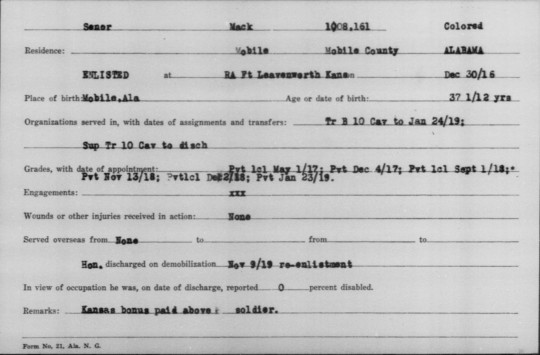
Mack Senor, Alabama World War I Service Record
A news article in the El Paso (Texas) Herald, dated 3 January 1921, notes that Pvt. Mack Senor, 10th Cavalry, on special duty at Fort Sam Houston, Texas, has been reassigned to Fort Huachuca, Arizona.[11]

The El Paso (Texas) Herald, 3 January 1921
The 1925 Kansas State Census enumerated Mack Senor as a soldier in the U.S. Army at Fort Riley, Kansas.[12]
Mack Senor retired from active service on 12 June 1926 at the rank of Sergeant, Headquarters and Service Troop, 9th Cavalry.[13] During his twenty-seven career with the U.S. Army, Mack Senar/Senor did a great deal of traveling in the service of his country.
Sources
"U.S., Spanish American War Volunteers Index to Compiled Military Service Records, 1898," database with images, Ancestry (https://www.ancestry.com/imageviewer/collections/2400/images/32803_261708-00335 : accessed 29 Nov 2013) > Sel-Sha > images 332-333 of 1955, entry for Mack Senar, Co. G, 3 Alabama Infantry (Colored.) (Spanish War.), Private; citing "General Index to Compiled Service Records of Volunteer Soldiers who Served During the War with Spain. Microfilm publication M871...NAID: 654543. Records of the Adjutant General's Office, 1780s-1917, Record Group 94. The National Archives in Washington, D.C."
Mack Senar, 1899; Register of Enlistments in the United States Army, 1798-1914; Record Group 94, M233; digital images, "U.S., Army, Register of Enlistments, 1798-1914," Ancestry (www.ancestry.com : accessed 29 Nov 2013) 1899 > L-Z > Image 396 of 592.
1900 U.S. census, Pinal County, Arizona Territory, population schedule (Military and Naval Population), Fort Grant, enumeration district (ED) 88, sheet 1A, line 87, Mack Senor; digital images, FamilySearch (https://www.familysearch.org/ark:/61903/3:1:S3HY-6P9S-69W : accessed 11 July 2023) 4113685 > image 7 of 16; citing National Archives and Records Administration microfilm T623, roll 47.
“U.S., Buffalo Soldiers, Returns From Regular Army Cavalry Regiments, 1866-1916,” database with images, Ancestry (https://www.ancestry.com : accessed 1 January 2021) > United States Ninth Cavalry ,entries for Mack Senor, 1901-1904; citing “Returns From Regular Army Cavalry Regiments, 1833-1916; NARA microfilm publication M744, 16 rolls; NAID: 300381; Records of U.S. Regular Army Mobile Units, 1821-1942, Record Group Number 391; The National Archives at Washington, D.C.”
Ibid.
“U.S., Army, Register of Enlistments, 1798-1914” database with images, Ancestry (https://www.ancestry.com : accessed 29 November 2013), entries for Mack Senor; citing “Register of Enlistments in the U.S. Army, 1798-1914; Microfilm Publication M233, 81 rolls; NAID: 1184717, 575272 and 1223563; Records of the Adjutant General’s Office, 1780’s-1917, Record Group 94; The National Archives in Washington, D.C.”
“U.S., Buffalo Soldiers, Returns From Regular Army Cavalry Regiments, 1866-1916,” database with images, Ancestry (https://www.ancestry.com : accessed 1 January 2021) > Ninth Cavalry, entries for Mack Senor, 1905-1909; citing “Returns From Regular Army Cavalry Regiments, 1833-1916; NARA microfilm publication M744, 16 rolls; NAID: 300381; Records of U.S. Regular Army Mobile Units, 1821-1942, Record Group Number 391; The National Archives at Washington, D.C.”
Ibid.
“U.S., Returns from Military Posts, 1806-1916,” database with images, Ancestry (https://www.ancestry.com : accessed 4 January 2021) > Kansas > Riley, Ft. Mounted Service School, entries for Mack Senor 1909-1917; citing “Returns From U.S. Military Posts, 1800-1916; Microfilm Publication M617, 1550 rolls; NAID: 561324; Records of the Adjutant General's Office, 1762 - 1984, Record Group 94; The National Archives in Washington, D.C.”
"Alabama World War I Service Records," database with images, Alabama Department of Archives and History (http://digital.archives.alabama.gov/cdm/landingpage/collection/p17217coll3 : accessed 22 May 2020), entry for Mack Senor, service no 1008.161; citing Military Service, Ft Leavenworth, Leavenworth, Kansas.
“Enlisted Men Returned To Their Old Organizations,” El Paso (Texas) Herald, 3 January 1921, p. 8 , col. 3; digital image from the Library of Congress, Chronicling America: Historic American Newspaper site (https://chroniclingamerica.loc.gov/lccn/sn88084272/1921-01-03/ed-1/seq-8/ : accessed 10 September 2022).
1925 State Census, Geary County, Kansas, population schedule, Fort Riley, p. 3, line 2, Mack Senor; digital images, FamilySearch (https://www.familysearch.org/ark:/61903/3:1:3Q9M-CS7R-QSHT-G : accessed 29 Nov 2013) 102009868 > image 292 of 621.
"U.S., Headstone Applications for Military Veterans, 1925-1963," digital images, Ancestry (https://www.ancestry.com/imageviewer/collections/2375/images/40050_2421402106_0395-01153 : accessed 19 Feb 2017); > 1941-1949 > Seiberlich, Joseph J-Sharpe, Herbert W > images1154-1155, Mack Senor: citing “Applications for Headstones for U.S. Military Veterans, 1925-1941. Microfilm publication M1916, 134 rolls. Records of the Office of the Quartermaster General, Record Group 92. National Archives at Washington, D.C.”
1 note
·
View note
Text
On this day in Wikipedia: Thursday, 12th October
Welcome, Benvenuto, 你好, 안녕하세요 🤗
What does @Wikipedia say about 12th October through the years 🏛️📜🗓️?

12th October 2020 🗓️ : Death - Roberta McCain
Roberta McCain, American socialite and oil heiress (b. 1912)
"Roberta Wright McCain (February 7, 1912 – October 12, 2020) was an American socialite and oil heiress. She was the wife of Admiral John S. McCain Jr., with whom she had three children including U.S. Senator John S. McCain III and stage actor and journalist Joe McCain. McCain was active in the Navy..."

Image by PH1 ROBERT JOYAL
12th October 2018 🗓️ : Event - Princess Eugenie
Princess Eugenie marries Jack Brooksbank at St. George's Chapel, Windsor Castle.
"Princess Eugenie, Mrs Jack Brooksbank ( YOO-zhə-nee; Eugenie Victoria Helena; born 23 March 1990) is a member of the British royal family. She is the younger daughter of Prince Andrew, Duke of York, and Sarah, Duchess of York. She is a niece of King Charles III. At birth, she was sixth in the line..."

Image licensed under CC BY 2.0? by Mark Jones
12th October 2013 🗓️ : Event - 2013 Peru bus disaster
Fifty-one people are killed after a truck veers off a cliff in Peru.
"On October 12, 2013, a cargo truck carrying 51 people, including 14 children, plunged off a 200-metre cliff, killing everyone on board. This incident is currently tied with the 2018 Pasamayo bus crash as the deadliest road accident in Peruvian history. According to authorities, the truck, which was..."
12th October 1973 🗓️ : Event - Gerald Ford
President Nixon nominates House Majority Leader Gerald R. Ford as the successor to Vice President Spiro T. Agnew.
"Gerald Rudolph Ford Jr. ( JERR-əld; born Leslie Lynch King Jr.; July 14, 1913 – December 26, 2006) was an American politician who served as the 38th president of the United States from 1974 to 1977. He previously served as the leader of the Republican Party in the U.S. House of Representatives from..."

Image by David Hume Kennerly
12th October 1923 🗓️ : Birth - Jean Nidetch
Jean Nidetch, American businesswoman, co-founded Weight Watchers (d. 2015)
"Jean Evelyn Nidetch (née Slutsky, October 12, 1923 – April 29, 2015) was an American business entrepreneur who was the founder of the Weight Watchers organization...."

Image by Bernard Gotfryd
12th October 1822 🗓️ : Event - Pedro I of Brazil
Pedro I of Brazil is proclaimed the emperor.
"Dom Pedro I (English: Peter I; 12 October 1798 – 24 September 1834) was the founder and first ruler of the Empire of Brazil, where he was known as "the Liberator". As King Dom Pedro IV, he reigned briefly over Portugal, where he also became known as "the Liberator" as well as "the Soldier King"...."
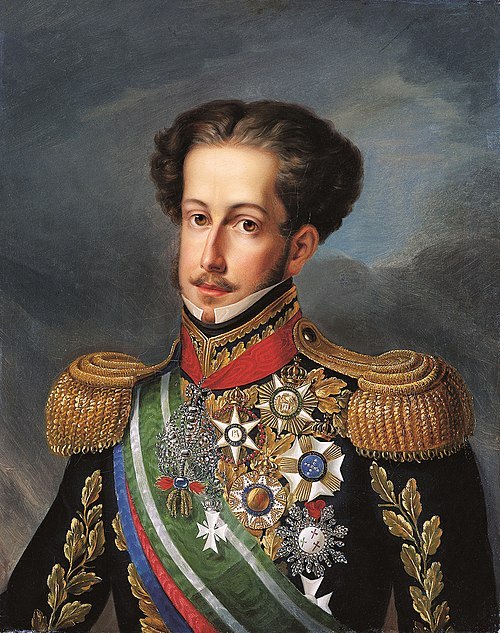
Image by Simplício Rodrigues de Sá
12th October 🗓️ : Holiday - Christian feast day: Wilfrid of Ripon
"Wilfrid (c. 633 – 709 or 710) was an English bishop and saint. Born a Northumbrian noble, he entered religious life as a teenager and studied at Lindisfarne, at Canterbury, in Francia, and at Rome; he returned to Northumbria in about 660, and became the abbot of a newly founded monastery at Ripon...."
0 notes
Text
Burdett-Coutts sundial and lesbianism and transgender history

https://photos.app.goo.gl/U9etP6rDSdJ1EKBn8
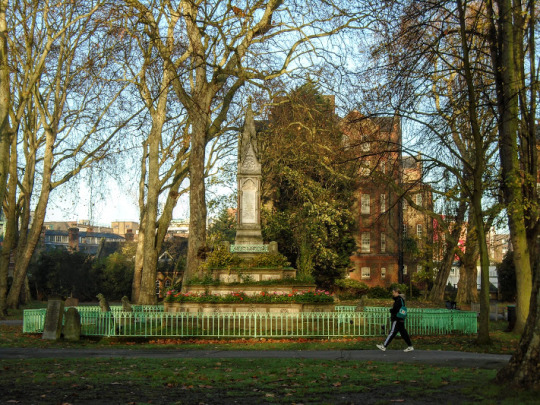
https://photos.app.goo.gl/f47wPs52KbHvHK7Z7
https://historicengland.org.uk/listing/the-list/list-entry/1113250 (History + Details, below)
History
The public gardens around the St Pancras Old Church were opened in 1877,after the churchyard was closed for burials in 1850.The gardens are made up of part of the old churchyard for the church of St Pancras,enlarged in 1800,and a separate burial ground for St Giles-in-the-Fields,added 1803.It was a preferred burial place for Catholics,with an area devoted to French émigrés.The burial ground and churchyard were partially destroyed by the development of the Midland Railway;the company formed a cutting in 1865 for the construction of the railway lines from St Pancras Station.The clearances of tombs and bodies was highly controversial and caused considerable protest;the graves were dug up at night,behind screens,a process overseen by Thomas Hardy,then an apprentice architect,and many years later recorded in a poem,‘The Levelled Churchyard’(1882).The grandest tombs survived,including the tomb to Sir John Soane(d 1837)and his wife(d 1815),but others were moved.The ground was levelled and the headstones were placed in mounds or around the walls.In 1875 the remaining land was acquired by the St Pancras Vestry for use as public space,and the gardens were opened to the public in June 1877;Baroness Burdett-Coutts laid the foundation stone of the monument she had presented,to commemorate the graves disturbed in the construction of the railway.The gardens were laid out in their present form in 1890-1 by the Vestry,in conjunction with the Midlands Railway Company.
Angela Georgina Burdett, suo jure Baroness Burdett-Coutts(1814-1906)was a prominent philanthropist who is estimated to have given away between £3 and £4 million.As described by her biographer Edna Healey,in the Oxford Dictionary of National Biography,Burdett-Coutts set a new standard in philanthropy:prompt and practical,her charity was given with style and without condescension.In her time she was an honoured institution and most of her enterprises bore lasting fruit.Even her visionary schemes that did not survive–Columbia market and Columbia Square–served as models for the shopping precincts and housing estates of a later era.In the breadth and sincerity of her sympathies and in the variety of her social and intellectual interests she has had no rival among philanthropists before or since.Her example not only provided an immense stimulus to charitable work among the rich and fashionable but also suggested solutions to many social problems.She was the first woman to be given a peerage,in 1871,and was thus described by Edward VII:‘after my mother the most remarkable woman in the country’.Burdett-Coutts lived with her companion and partner Hannah Brown for 52 years,after whose death,she married her protégé,William Lehman Ashmead Bartlett;it was called the ‘mad marriage’ by Queen Victoria,for Burdett-Coutts was 66,and Bartlett 29.
Burdett-Coutts commissioned this memorial to commemorate a diverse group of people whose graves had been destroyed by the development of the railway.Among the names included on the memorial is that of the Chevalier d’Eon,who was a celebrated French spy and diplomat in the eighteenth century.The Chevalier lived the first part of their life as a man and the latter as a woman.Their gender was widely speculated about,and they were written about in many satires and pamphlets.D’Eon used female pronouns in later life,and signed their name as Mademoiselle d’Eon.
Numerous other significant historic figures are noted on the memorial, including Sir Edward Walpole, Sir John Soane, and sculptor Thomas Flaxman, whose tomb (q.v.) stands nearby. The burial of Sidly Effendi, the Turkish Ambassador, presumably a Muslim, is quite unusual. In line with Burdett-Coutts’s humanitarian principles, a special dedication is made to the ‘memory of those whose graves are now unseen, or the record of whose names may have become obliterated’.
Details
Memorial sundial,1877-1879.Designed by George Highton of Brixton for Baroness Burdett-Coutts, and manufactured by H Daniel and Co,cemetery masons of Highgate;relief carvings by Signor Facigna.MATERIALS:constructed from Portland stone,with marble and granite dressings and mosaic detail,a red Mansfield stone base and wrought ironwork.DESCRIPTION:the memorial is a tall square shaft in decorated Gothic style,standing on a square plinth and a three-tiered octagonal base.The shaft has angle colonnettes in pink and grey granite,which rise on each side to a trefoil head to a recessed panel with inscriptions in applied lettering.Four tall,richly-moulded gables surround a crocketed spire with corner pinnacles.The SW side faces the entrance to the gardens.The trefoil contains a marble plaque beneath a relief carving of St Pancras with a palm and book,above a marble panel with a two-part inscription:the first is the beatitudes from St Matthew V,3-9 (verses 4 and 5 in reversed order),and the second is a religious poem,the author of which is unknown.In the gable above is an iron sundial,with the words ‘TEMPUS EDAX RERUM’ –time devours all things.The SE and NW sides have relief carvings of Morning,represented by a woman with a cockerel upon her head,and Night,represented by a robed figure with a star and crescent moon.
The panels contain lists of names of eminent people once buried in the churchyards.On the NE is St Giles,whose panel has a dedication to those people whose graves were disturbed but whose names were not recorded.The names are listed thus:SE side:‘CHARLES LOUIS VICOR DE BROGLIE 1765/CHEVALIER D’EON,1810/FRENCH MINISTER PLENIPOTINTIARY/JOSEPH FRANCIS XAVIER DE HASLANG,1783/COUNT D’HERVILLY,1795 MARSHAL OF FRANCE/PASCHALIS DE PAOLI,1807 OF CORSICA/COMTE DE PONTCARRE,1810 /MICHAEL JOANNED BAPTISTA,BARON DE WENZEL,1790/OCCULIST TO THE COURT OF HUNGARY/LORD CHARLES DILLON,1741:LADY DILLON, 1751/ARCHIBISHOP DILLON,1806/GENERAL SIR RUFANCE DONKIN,KCB,GCH 1841/MISS FRANCES DOUGHTY,1763/DAUGHTER OF SIR HENRY TICHNORNE/GUY HENRY MARIE DU VAL, MARQUIS BE BONNEEVAL, 1863 /REV.JOSEPH DUNCAN,1797/SIDLY EFFENDI,1811/ TURKISH AMBASSADOR TO THIS COUNTRY/JOHN FLAXMAN,1826 SCULPTOR/SIR JOHN FLEETWOOD,1741/PHILLIPPO NEPUMUCENO FONTANAE,1793/AMBASSADOR FROM THE COURT OF SARDINIA/TO THAT OF SPAIN/FRANCIS PIETRI FOZANO,1838/CLAUDE JOSEPH GABRIEL,CISCOUNT LE VAULX,1809 / MARSHAL OF FRANCE/BONAVENTURA GIFFARD,1734 AND ANDREA GIFFARD,1714 /JOHN ERNEST GRABE D.D.1711/ANTOINE FRANCOISE,COMTE BE GRAMONT,1795/SIR JOHN GURNEY,1845/FORMERLY THE CHIEF BARON OF THE EXCHEQUER/SAMUEL HARRISON,MUSICIAN 1812/THE HON ESME HOWARD OF NORFOLK,1728/YOUNGEST SON OF HENRY,EARL OF ARUNDEL AND SURREY/AND HIS WIFE MARGARET,1716 /COUNT LA MARCHE,1806 BISHOP OF LEON’(33)NW side:‘HIS EXCELLENCY PHILLIP ST MARTIN/COUNT DE FRONT,1812./MORRIS LEIVESLEY,1849,/54 YEARS SECRETARY OF THE FOUNDLING HOSPITAL./ JAMES LEONI,1746, ARCHITECT./COUNT FERDINAND LUCHESSE,1806, ENVOY FROM NAPLES/ANDRES MARSHALL,1813,PHYSICIAN./MAURICE MARGAROT,1815,AND HIS WIFE ELIZABETH,1841 / THOMAS MAZZINGHI,1775,VIOLINIST./FATHER OF JOSPEH MAZZINGHI,THE COMPOSER./THE HON:ISAAC OGDEN,1819./REVD FATHER O’LEARY,1802./DON JOSEPH ALONZO ORTIZ,1813,/CONSUL GENERAL OF SPAIN./STEPHEN PAXTON,1787,MUSICIAN./ PETER PASQUALINO,1766,MUSICIAN./MADELINE ANTOINETTER PULCHERIE,MARQUISE DE TOURVILLE,1837./SENORA DONA MARIA MANUELA RAPAOL,1839,/NATIVE OF CORDOVA./SIMON FRANCIS RAVENET,1764,ENGRAVER./LADY SLINGSBY,1693,AN ACTRESS./SIR JOHN SOANE,R.A.F.R.S. 1837,/ARCHITECT OF THE BANK OF ENGLAND/JEREMIAH LE SOUEF,1837,/FOR 20 YEARS VICE CONSUL OF THE UNITED STATES./SIR CHARLES HENRY TALBOT,1798,/HIS WIFE AND OTHER MEMBERS OF THE TALBOT FAMILY./SIR HENRY TEMPEST,1753./MANOEL VIERA,1783 PORTUGUESE MERCHANT./JOHN WALKER,1807/AUTHOR OF THE PRONOUNCING DICTIONARY./EDWARD WALPOLE,1740./SIR JOHN WEBB,1797,/AND HIS WIFE BARBARA,1740.’(29)NE side,beneath the dedication:‘RT:HON’ MARY DOWAGER LADY ABERGAVENNY,1699./FRANCIS CLAUD AMOS 1800./THE HON:COUNT ARUNDELL,1752 AND HIS WIFE ANN,1778./LOUIS CLAUD BIGOT,1803/MINISTER PLENIPOTENTIARY FOR THE KING OF FRANE IN SWEDEN./LADY BOWYER 1802,RELICT OF SIR WILLIAM BOWYER,BART/WILLIAM BRETT,1828,ARTIST./HENRY BURDETT,1736, GOLDSMITH./MARY BURKE,1846./WIFE OF JOHN BURKE,AUTHOR OF “THE PEERAGE”./THE HON:ELIZABETH BUTLER,1823,/DAUGHTER OF LORD LANGDALE./RT:HON:ELIZABETH,COUNTESS OF CASTLEHAVEN,1743,DAUGHTER OF LORD ARUNDELL./TIBERIUS CAVALLOW,1809, SCIENTIST./THE HON AMEY CONSTABLE,1783,/DAUGHTER OF LORD CLIFFORD OF CHUDLEY./CATHERINE CONSTABLE,1783/WILLIAM CUMMINGS,1833,GENERAL OF H.M.FORCES./JOHN DANBY,1798,MUSICIAN./ALEXANDER CAESAR D’ANTERROCHES,1793,/BISHOP OF CONDORN./JOSEPH CAYETANO DE BERNALES,1825,SPANISH MERCHANT,/ AND HIS WIFE ELIZABETH,1823.’(24)The square plinth has four corner posts linked by foliate ironwork.The Mansfield stone octagonal base has three tiers of troughs,with the outer face of each containing intricate mosaic and relief moulded panels depicting flowers,foliate symbols and the seasons.The troughs are filled with plants.C20 cast-iron railings enclose the monument,and in line with the corners are four stone statues:two of seated dogs,said to have been modelled on Burdett-Coutts’s collie,and two lions.Johann Christian Bach’s plain pauper’s plaque stands on the NW edge of the railings.
Amongst people commemorated is the Chevalier d'Eon (1728 – 1810) , an 18th century French spy, diplomat and freemason whose gender transition was recognised in French and English law.
For 33 years, from 1777, d'Éon dressed as a woman, claiming to have been female at birth. Doctors who examined d'Éon's body after d'Éon's death discovered that d'Éon would have actually been designated male at birth.
Source: Burrows, Simon (October 2006). Blackmail, scandal and revolution London's French libellistes, 1758–92. Manchester, UK: Manchester University Press. 9780719065262.
4 notes
·
View notes
Photo

William Wells (~1798-1803), Samuel Wells (1802-1803), and Henry(?) (~1801-1804). Ancient Burial Ground, Hartford, Connecticut. Photo taken 29 March 2019.
12 notes
·
View notes
Photo










The Republic of Switzerland was formed on March 29, 1798.
#Luzern#Lake Lucerne#Lucerne#Vierwaldstättersee#Mount Rigi#Swiss Alps#Mount Pilatus#Mount Stanserhorn#mountains#cityscape#landscape#Klewenalp#Seebodenalp#Ticino#Bern#Melchsee Frutt#Obwalden#Nidwalden#Schwyz#original photography#tourist attraction#landmark#Republic of Switzerland#formed#29 March 1798#Swiss history#Schweiz#225th anniversary
0 notes
Text
"A historical chronological depiction from an imaginary Italy: a guess the reference game". 100th Anniversary
Unknown: Pdor Mythos
Unknown: Appears the superheroes gene "Vip"
10'000 A.C: In the Mediterranean basin lives a society of amazoness
89 A.C: Marcus Aemilius Scaurus is born
71 A.C: Spartacus leads a slaves rebellion
55 A.C: Tros of Samothrace takes the parts of the Breton resistance against the Roman conquest of Britain
50 A.C: Julius Augustus Caesar's complete conquest of Gaul finds resistance against a village in Armorica
11 March 44 A.C: Julius Augustus Caesar is murdered
80: Barbarian Ardarico's conquest of Rome miserably fails; Flavian Amphitheatre is inaugurated and Timo becomes a gladiator
128: Architect Lucius Quintus Modestus repeatedly travels through time until the 21st century and visits the modern Japan
536: Martinus Paduei, a mysterious genius ahead of his time, leaves his mark in history as inventor, business owner, strategist and politician
569: King Alboin befriends and welcomes a sly and smart peasant to his court in Verona
726: Girolama Pellacani is raped by the Longobards
1050: Brancaleone of Norcia is born
1076: The saint hermit of Bismantova is sent to Aquileia in search of allies at the behest of Pope Gregory VII, but is hindered by the devil
1080: Brancaleone of Norcia takes part at the first crusade
1141: Baudolino is born
1150: Various supernatural events take place at the castle of Otranto
1249: The company of Selva Bella participates at the mission to free Enzo of Sardinia
1271: Marco Polo begins his travel toward the Orient
1280: Marco Polo reaches the court of Kublai Khan and tell him about the 55 cities
1295: Marco Polo returns to Venice
Early XIV Century: To win the maritime war against Venice, the Genoese captain Luigi Gottardi builds the underground canal of Meloria
1300: Poet Dante Alighieri visits the afterlife in a week
1327: William of Baskerville is involved in a murder case sets in a benedictine abbey
15 April 1452: Leonardo da Vinci is born
1478: Takes places the quests of the "Company of the Gallows"
1506: Arte Spalletti becomes an artist
1534: Two english brothers find a passage for a subterranean world where the time flows more slowly and is populated by a society of pygmies
1537: During the battle of Turin a french soldier mysteriously survives to several deadly wounds
1570: To save her lover, war-prisoner at Famagosta in Cyprus, the duchess of Eboli wears an armor and under the alias of Captain Storm fights several battle against the Ottoman Empire
1595: The suicide of two lovers leads peace in a longtime feud between two Veronese families
1630: The black plague continues its killspread, Spanish local lord Don Rodrigo is found dead
1643: Nobleman Roberto de la Grive is presumed lost after a shipwreck in the Pacific Ocean
1650s: Alchemist Girolamo Fumagalli develops the basic technique of thanatography
1660s: Viscount Medardo of Terralba returns changed and maimed in a strange and impossible way from the Ottoman wars in Bohemia
1686: After losing his brothers during the Franco-Spanish war at the hand of Duke Wan Guld, the Lord of Ventimiglia Emilio of Roccabruna promises to avenge them and becomes the notorious Black Corsair
1711: A group of alchemists evoke a demon to gain eternal life
1713: Sir Frances Varney commits suicide by throwing himself into Mt. Vesuvius
7 January 1730: In Siena is approved the Notice of Violante of Bavaria
1741: Antonio Salvatore "Totò" Sapore invents pizza to bring peace between French and Neapolitan armies
1750s: Armando "The Scorpion" Catalano seeks the Templar treasure
1762: Reverend Yorick, friend of Tristram Shandy, visits France and Italy for a health issue
1764: Father Schedoni is involved in a conspiracy
1767: Cosimo Piovasco of Rondò, future baron of Ombrosa, climbs up a tree and will live his entire life on the trees
18 October 1775: Carlo Altovivi is born
1790: Scandal of the fallen noble family Mazzini
1798: Nobleman and soldier Fabrizio del Dongo is born
25 March 1799: Jacopo Ortis dies
1801: Vampire Giovanni Nosferatu is born
1812: Soldier Lazzaro Scacerni is one of the survivors of the retreat from Moscow and, after returning in Italy, becomes a wealthy miller
1825: History professor Mercurio Loi disappears
1826: Dr. Weiss solves the Fritzheim case
1829: A frenchman discovers the Spada family's treasure located in Montecristo Isle
1850: Count Isidor Ottavio Baldassarre Fosco reaches England to plan a political conspiracy
1855: Princess Teresa Uzeda of Francalanza dies
1860: The wooden puppet Pinocchio becomes a real children
1863: Three persons, claiming to be part of a scientific expedition, are spotted been ejected from Mt. Stromboli
1864: Countess Marina Vittoria Crusnelli of Malombra gets possessed
1870: Enrico Bottini is born; Edwin Drood mysteriously disappears leaving a secret still unsolved
1874: As social experiment some prisoners are released in a deserted island to create a self-managed isolated colony; Arsène Lupin is born
1878: Rosso Malpelo dies
1885: A frenchman from Tarascon survive to a fall during an attempt to reach the peak of Mt. Blanc
1887: Professor Sandrelli develops a substance that cancels gravity
1888: Full of remorse, baron Carlo Coriolano of Santafusca admits of being a killer
1889: Masked hero "Hidden Face" and Ugo Pastore take part at the Treaty of Wuchale; Escorted by english explorer Adam Wild, Count Narciso Molfetta explores Africa
7 December 1891: Vito Andolini is born
1893: Marco Pagot is born
1895: Architect Emilio Varelli starts the construction of the Three Mothers' manors
September 1897: Giannino "Gian Burrasca" Stoppani is born
1898: The suppression of Milan riots are sabotaged by Tommaso Reiner
1899: Vadim Vadimovich N. Storov is born
29 May 1899: Giuseppe "Peppone" Bottazzi is born
30 May 1899: Don Camillo Tarocci is born
Early 1900s: Paolo Zeder hypothesizes the "K-Zone" theory; Actress Maria Sarti gains notoriety under the stage name Ninì Tirabusciò
1910: Architect Emilio Varelli finishes the construction of the Three Mothers' manors; Aldovino reaches the moon to marry the princess Yala; Count Emilio Ponticelli partecipes at the Daily Post air race
1911: Famous composer Gustav von Aschenbach dies during a holiday in Venice
WWI: Flying ace Marco Pagot turns into an anthropomorphic pig and assumes the identity of the bounty hunter Porco Rosso; Aviator Luciano Serra, aviator Matteo Campini, Private Lazzaro Scacerni and Private Italino take part at the conflict; Baron Cesare Stromboli helps the Triple Entente; Private Piero dies
1915: Air piratess Filibus terrorizes southern Italy performing several thefts
15 October 1915: Emilio Largo is born
1919: A man dressed in red and constantly speaking in rhyme becomes one of the richest italian
1920: Famous film director Guido Anselmi is born; Pugilist Furio Almirante emigrates in America
1927: Dr. Artemio Zacchia founds a medicine and natural science academy and starts his studies on immortality
March 1927: Detective Francesco "Ciccio" Ingravallo solves the Via Merulana mystery
June 1929: Fascist militia suppression at Fontamara
1930: Dominetta Vitali is born; Scientist Pier Cloruro de' Lambicchi creates a substance that gives life to the images
1933: Gastone Uliani investigates the faun's case
17 July 1934: Ugo Fantozzi is born
1935: Italy's invasion of Ethiopia is obstacled by local spy Bara
1936: Lawyer Gino Motta is locked up in an asylum after claiming that in the sea near Levanto lives a colony of mermaids
29 September 1936: Lolito B. Lassica is born
1938: Benzino Napaloni signs an alliance with Adenoid Hynkel; The launch of
hierarch Gaetano Maria Barbagli's expedition for Mars takes place; Primo
Cossi chooses to undergoes at the EPRA experiment; Dr. Emilio Lizardo and Professor Tohichi Hikita build the oscillation overthruster, Lizardo trying to enter into the 8th dimension becomes insane; American archeologist Martin Padway travels through time until 535
1939: Count Zero becomes a fascist agent; Film director Salvatore Di Vita is born
10 May 1939: Hierarch Gaetano Maria Barbagli and his troop land on Mars
WWII: Captain Alberto Bertorelli, Captain Antonio Corelli, Major Oscar Pilli, Sergeant Nicola Lo Russo, Lieutenant Gino Rossati, Marmittone and Galeazzo Musolesi take part at the conflict; Partisian Johnny loses his life; Partisan Natalino "Capellone" Tartufato saves the life of the english spy Charles Harrison, Private Antonio is considered as straggler in Russia
1940s: Marcella Valmarin becomes a famous actress under the stage name of Alba Doris
25 December 1942: Photographer Valentina Rosselli is born
1943: The Finzi-Continis family is exterminated in a German Nazi lager, along with other jews
1944: In a hidden palace in the Republic of Salò, tortures takes place by hand of four wealthy personality of the republic
1945: End of World War II in Europe and the prison camps are freed, Giosuè Orefice is among the survivors
3 March 1945: Nicola "Nico" Giraldi is born
6 July 1945: Roberto "Rocky" Balboa is born
1950s: Bianca Castafiore is recognized as one of the best soprano in the world; Amelia Bonetti and Pippo Botticella become two renowned tip-tap dancers
6 September 1950: Salvo Montalbano is born
1952: In a laboratory comes to life a creature made of rubber
1953: Michele Apicella is born; During a diplomatic visit in Italy a princess escapes through the streets of Rome
1955: Criminal and con artist Mr. Ripley lands in Italy
1956: Painter Buono Legnani commits suicide
1957: Exorcist Don Zauker lands in Livorno
19 September 1958: Renato "René" Ferretti is born
1959: Topo Gigio debuts and becomes a television star; Detective Nero Wolfe moves to Rome after some "problems" with FBI
1960: Authoress Enrica Valldolit wins the Nobel Prize in Literature
1961: A british spy agent kills the terrorist Emilio Largo; A cemetery man has a close encounter with the Death
15 August 1962: A young university student loses his life in a car accident caused by an overtaking
1963: Medic Duca Lamberti loses his license and is imprisoned for practicing euthanasia; Calimero is born; "The Alphabet Killer" is caught
1966: Criminal Mastermind "The Fox" evades from prison
4 October 1967: Deboroh La Roccia is born
1968: Diabolik is presumed dead; Primo Cossi wakes up from hibernation and becomes a hitman related to the events of the Years of Lead
1969: A british criminal gang robs the FIAT industry
1970s: A criminal uses the sewer of a metropolis as hiding place and house; At Milan a group of bounty hunters form the C.T Association
1971: Fumagalli's thanatography is used to solve the four flies' mystery; Alberto Valle becomes the new Avio Motor CEO
1972: Somewhere in northern Italy, inside the Military Area 36, Professor Endriadi and his research team build the first AI
February 1973: Four men commits suicide through planteration in a villa near Paris
1 June 1973: A terroristic attack blows up the Madonnina statue atop Milan Cathedral
1974: Andrea Straniero is born; Approved the healthcare reform "C.M.G"; Camilla Cagliostri is born
1975: After months of shipwreck on a deserted island in the Mediterranean sea,
the wife of the industrial Lanzetti and a sailor are saved; The corpses of
the Crespi d'Adda cemetery are resurrected; At Rome, German psychic medium Helga Ulmann is brutally killed
1976: For having inflicts severe damages to the organized criminality all over Italy in just few years, mysterious killers murder the police commissioner Betti
1977: Virginia Ducci survives at a murder attempt thanks to her clairvoyance
1978: Science fiction writer Della Spigola is abducted by the martians of
Phobos; Discovered a breed of talking dog with a particular white fur with red spots; Famous chef Fausto Zoppi is killed by drowning; It ends the Filippo Carducci's kidnapping case; Riccardo Finzi begins his career as P.I
1979:
1980s: The ministry of the Great Hunt is founded;
1980: "Caterina" an American brand of robotic housekeeper goes on sale; Neapolitan camorra boss "The Marseillaise" and his gang are killed after a showdown; Rocky Giraldi is born, so named in honour of the famous boxer
12 August 1980: The Matchstick Man is spotted near the Abruzzi countryside
3 October 1980: Leonardo Zuliani is born
1981: The criminal known as "The Human Beast" loses his life in a gunfight
1982: The "K-Zone" theory is confirmed and Paolo Zeder is resurrected as zombie
1983: For the first time, alive people witness the "Palio di Siena of the dead contrade"; It is archived the case of the serial killer known as "The Killer Dwarf"; Naples F.C pays three billion for the acquisition of Brazilian footballer Paulo Roberto Cotequinho, he'll lead the Naples to the victory of its first championship four years later.
1984: Two men inadvertently travel through time back the 1492
August 1988: The first issue of "Bloody Eye" is published
1989: During a conference in Rome, experts try to discover the truth behind the Edwin Drood mystery; Deboroh La Roccia becomes Rat-Man
20 March 1989: Commissioner Corrado Cattani is killed in a mafia ambush
1990: FIFA World Cup scandal, the Italy team hires two pornstars to win; Salvo Montalbano becomes a police commissioner
1991:
1992: Sicilian gangster Johnny Stecchino uselessly resort to a person exchange to avoid death; During the annual Milan Film Festival, mystery fiction writer and amateur sleuth Jessica Fletcher resolves a murder case; During the quadrennial pallastrada world competition the St. Catherine prophecy comes true burning up the entire state of Gladonia
November 1992: Daria Marchesi is jailed for the Baldacci murder, thus Marino Strano becomes Bloody Eye's head writer
1994: "The Florence Monster" is finally arrested; A feud between two families ends with the use of a low-potential atomic warhead; After various vicissitudes experienced in India, Marco Donati is exposed at the Aquarium Berlin as "The boy with the gills"
1995: Marco Buratti aka "The Alligator" starts a new career as P.I.
1996: After his death Ugo Fantozzi returns to life until 1998
1997: Police agent Napoleone di Carlo abandons his profession and moves in
Switzerland
1999: Ugo Fantozzi is cloned; "The Fish in Love" becomes an international bestseller
2000s: Jimi Dini works at the development of his videogame "Nirvana"; Dr. Bartolomeo Zacchia continues his father's studies
2001: A romanian vampire is sighted in Rome
April 2001: Giorno Giovanna becomes the Gangstar of the mafia association "Passione"
2005: Police agent Rocky Giraldi enters in service
2006: Rise of nationalism in Italy brings to the birth of Captain Padania
July 2006: Activist Leonardo Zuliani disappears
2007: Mater Lacrimarum is killed
2009: During a spiritual séance, Gualtiero Marchesi conjures the Emily Ann Faulkner's spirit
2013: Long Wei becomes a local hero for the chinese communities in Italy; Celestine VI becomes the new pope
2014: An amateur gang of smart drugs dealers is arrested; Michele Silenzi gains superpowers
2015: Low-grade criminal Enzo Ceccotti gets superpowers and becomes the superhero Jeeg Robot; Arsène Lupin's grandson is spotted in Italy
2016: Benzino Napaloni is cloned; Intellectual Mario Bambea survives at his suicide attempt, contemporaneously begins the rise of popularity of the comedian Fabrizio "Bizio" Capoccetti
2017: In Calabria a farmer befriends a rare specimen of unicorn
11 September 2077: An asteroid falls in northeast Italy sweeping away Padoa, Vicenza and Verona while Venice is half submerged
|Cities&Places|
The Seven Cities
Meloria Canal
Gualdana Pine Forest
Nepente Isle
Stranalandia Island
Desolation Isle
Pescespada Island
Malapunta
Clerville
Porcionia
Bacteria
Kindaor
Gladonia
Tristalia
The Land of Toys
Gerolstein
Lotto Valentino
Bassavilla
Lancimago
Vigata
Montelusa
Loquasto
The 55 Invisible Cities
Pratofungo
Ombrosa
Pineta
Sagunto
Pista Prima
Frittole
Sevalio
Brigantes
Sompazzo
Monzurlo
Salsiccia
Acqua Traverse
Buffalora
Roccaverdina
Nofi
Norbio
Solara
Scasazza
Ponteratto
Idrasca
Giancaldo
Pieve Lunga
San Michele
Borgo Tre Case
Borgo Dieci Case
Accendura
|Fiction in Fiction|
Urban X (Pope)
Astrubal I (Pope)
Pius XIII (Pope)
Celestine VI (Pope)
Luke I (Pope)
Libero I (Pope)
Teomondo Scròfalo (Painter)
Dùdron (Painter)
Amos Pelicorti (Sculptor)
Jep Gambardella (Writer)
Cornelio Bizzarro (Writer)
Leo Cordio (Writer)
Ulisse Isolani (Writer)
Ubaldo Terzani (Writer)
Vincenzo de Fabritiis (Writer)
Thomas Prostata (Writer)
Giovanni Pontano (Writer)
Giuseppe Marchi (Writer)
Morgan Perdinka (Writer)
Antonio Casella (Writer)
Enrico Puzzo (Writer)
Arturo Vannino (Writer)
Edoardo Lasagnetta (Writer)
Ugo Redy (Writer)
Carlo Sperato (Poet)
Giancarlo Santini (Film Director)
Lippini Bros (Film Directors)
Gambalesta (Actor)
Enzo Melchiorri (Actor)
Franco Melis (Actor)
Saverio Crispo (Actor)
Marco Salviati (Actor)
Sofia Barlow (Actress)
Giorgio Fini (Tenor)
Carlo "Vitalis" Balzani (Tenor)
Tony Corallo (Singer)
Pat Rubino (Singer)
Luca Pappacena (Singer)
Quartetto Basileus (Band)
Martino Piccione (Guitarist)
Mariottide (Songwriter)
DJ Vomito (Rapper)
Bud "Bomber" Graziano (Boxer)
Franco Fibbri (Soccer Player)
Antonio Pisapia (Soccer Player)
Gli occhi del cuore ("The Eyes of the Heart") (Tv Series)
Medical Dimension (Tv Series)
La Bomba ("The Bomb") (Tv Series)
Redenzione ("Redemption") (Movie)
Paura d'odiare ("Fear to Hate") (Movie)
L'usuraio licantropo ("The Werewolf Usurer") (Movie)
Thor e le regine nude ("Thor and the Naked Queens") (Movie)
Il vortice equestre ("The Equestrian Vortex") (Movie)
La regina del pianeta nero ("The Queen of the Black Planet") (Movie)
La palude del caimano ("The Caiman Marsh") (Movie)
La vendetta del cobra ("Cobra's Revenge") (Movie)
I ragazzi del Bronx ("The Bronx Boys") (Movie)
Il caimano ("The Caiman") (Movie)
Cataratte ("Cataracts") (Movie)
Mocassini assassini ("Assassin Moccasins") (Movie)
Maciste contro Freud (Maciste Versus Freud") (Movie)
La mamma di Freud ("Freud's Mom") (Movie)
Natale con la casta ("Christmas with the Caste") (Movie)
La Febbra ("The Fever") (Movie)
La polizia s'incazza (Movie)
Sinite Parvulos (Movie)
Margas (Movie)
Il terrore di Parigi ("The Terror of Paris") (Play)
Space Queen Vega (Videogame)
Amedeo's Revenge (Videogame)
Il codice indecifrabile ("The Indecipherable Code") (Novel)
L'albicocco al curaro ("Apricot with Curare") (Novel)
La paura del giorno ("Fear of the Day") (Novel)
L'apparato umano ("The Human Apparatus") (Novel)
Evoluzione digitale ("Digital Evolution") (Novel)
Cortocircuito ("Short Circuit") (Novel)
Folgore su Policastro ("Thunderbolt over Policastro") (Novel)
La ninfa e il cadetto ("The Ninphe and the Cadet") (Novel)
Il pesce innamorato ("The Fish in Love") (Children's Book)
Bloody Mario (Comic Strip)
Bloody Eye (Comic Book)
Megaditta (Company)
Nosferatù (Company)
Finmor (Company)
Centovetrine (Company)
Auto Avio Motor (Company)
SOFRAM (Company)
Tekne (Company)
Wondercomics (Company)
Tondello Spa (Company)
Digitex (Company)
Sbav (Company)
Famburgher House (Company)
Trattoria Aldini (Company)
Smack-O-Mat Corporation (Company)
Partito Regressista (Politic)
Partito Socialista Unificando (Politic)
Italia in Marcia (Politic)
Grande Destra (Politic)
Longobarda (Football Club)
Borgorosso (Football Club)
Marchigiana (Football Club)
Olimpia (Football Club)
Eat it! (Product)
Fido Uomo (Product)
Io Cane (Product)
Pandoro Sauli (Product)
Cacao Meravigliao (Product)
Cioccolato Spagnoli (Product)
Marmellata Puffin (Product)
Acqua pulita (Product)
Coralba (Product)
Sarchiapone (Animal)
Colombre (Animal)
Jaguar Shark (Animal)
Tropelio (Animal)
16 notes
·
View notes
Photo

Capture of EIC Triton by the privateer Hasard (ex-Cartier), under Robert Surcouf by Leon Trémisot, 1850
The Triton was commissioned by the East India company in 1787. She undertook four journeys, since her third she was under the command of Captain Philip Burnyeat.
He left Portsmouth on 9 July 1795, bound for Madras and Bengal. Because she was travelling in wartime, Burnyeat had arranged for a letter of marque, as was customary for EIC ships, which was issued to him on 1 May 1795. This authorized him to engage in offensive action against the French, not just defensive. The French captured Triton at Balasore Roads on 29 January 1796.
The privateer Robert Surcouf had had a successful cruise in the Indian Ocean capturing several vessels, including the pilot boat Cartier, which he renamed Hasard. He transferred his remaining men from his ship Émilie to Hasard and on 28 January, sighting Triton at anchor, decided to attack. He recognised only too late the overwhelming superiority of his opponent. Surcouf, feeling unable to flee, decided to board her with his 26 men, After haranguing his men, he approached under a British flag, before hoisting French colours at the very last moment and launching a violent assault. In the ensuing 45-minute battle, Triton suffered 5 wounded and 10 killed, including Burnyeat and the first officer, Picket; Surcouf transferred his prisoners to Diana, another vessel that he had captured, and which he released to her captain against a 30,000 rupee ransom.
Newspaper accounts stated that a boatswain had persuaded 20 members of Triton's deck crew to decline to fight.
Surcouf returned to Île de France (Mauritius) with his prizes, arriving on 10 March 1796. However, Émilie had been sailing without a letter of marque, so although the Prize court declared the prizes legal, it seized them and sold them for the benefit of the State. The EIC put the value of the cargo it lost at £3,030.
However, it could be conquered back again very quickly, where she first operated in coastal trade in the name of the crown. The EIC chartered her in 1798- 1802 to sail again for her as a trade and transport ship. She undertook these voyages but what finally happened to her is unknown.
37 notes
·
View notes
Photo

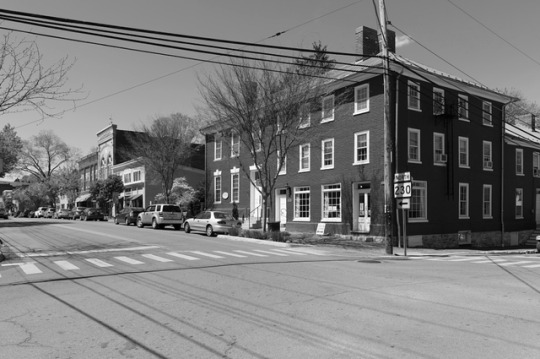
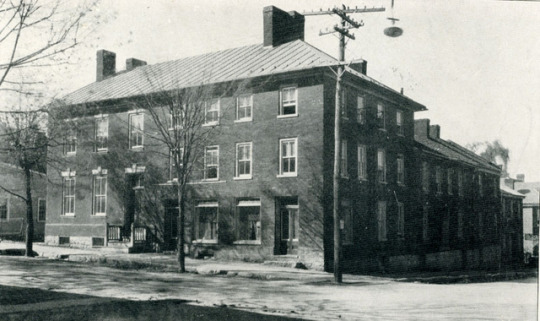




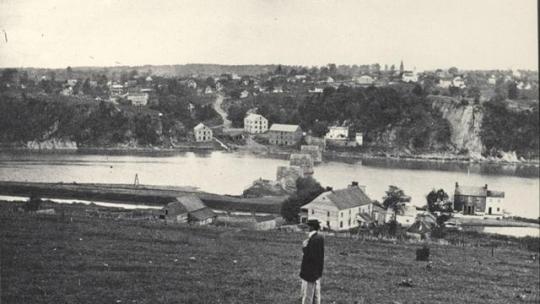


Ghost Expedition Jefferson County, Shepherdstown WV: Entler Hotel/Historic Shepherdstown
Shepherdstown is considered the "oldest city in West Virginia" with a history predating the French-Indian War.
The town was chartered in 1762 by the royal Virginia governor as Mecklenberg, named for Charlotte of Mecklenberg-Strelitz, wife of King George III. The name of Charlottesville had already been granted to another town in the colony. Thomas Shepherd was named the trustee of the town of 222 acres which had been granted to him in 1734. Eventually the town would be named for him in 1798
Shepherdstown is also known by the nickname of "The Old Unterrified" due to its contributions to the nation's wars. Shepherdstown was said to have provided more soldiers in the American Revolutionary War than any other town of its size in Virginia. In response to General George Washington's call for volunteers in 1775, the Mecklenberg company of 97 men commanded by Capt Hugh Stephenson made the famous "Beeline March" from Morgan Spring to Cambridge Massachusetts, ranging 600 miles in 24 days
According to the Shepherdstown's Register in 1850, the town "sent nearly three complete companies to the field" in the War of 1812 and contributed to ranks of several other companies. Troops from Shepherdstown, led by Lieutenant Bennett Riley, repulsed the British attack at the Battle of Plattsburgh. During the capture of Fort George, a Shepherdstown resident, Michael Durnhoeffer, leapt upon the wall of the fort amidst a barrage of artillery fire, and yelled out, “HURRAH FOR OLD SHEPHERDSTOWN”
During the Mexican War, Colonel John Francis Hamtramck led the 1st Virginia Volunteer Regiment. He was mayor of Shepherdstown from 1850 to 1854, and from 1853 to 1858 served on the Jefferson County Court. He died at his home in Shepherdstown in 1858. The Hamtramck Guard (The Shepherdstown Light Infantry) was sent to Harpers Ferry to quell John Brown's raid on the federal armory in 1859. In the Civil War, this group became Company B, 2nd Virginia Infantry, Army of Northern Virginia
Battles took place all around Shepherdstown throughout the Civil War due to its proximity to Pack Horse Ford, a crossing of the Potomac River. After the Battle of Antietam in 1862, Shepherdstown became a giant makeshift hospital for thousands of confederate wounded
A Confederate rear guard, led by General William Pendleton, repulsed Union attacks on forces withdrawing from Sharpsburg in the Battle of Shepherdstown. The 118th Pennsylvania, known as the Philadelphia Corn Exchange Regiment, suffered heavy losses against battle-hardened confederates, amounting to 269 casualties from 737 men
The properties making up the Entler Hotel were built in 1786 by Philip Adam Entler Jr and expanded in 1790 by Daniel Bedinger. The hotel returned to Entler family ownership in 1824 and was managed for many years by Daniel Entler and his wife Margaret, and later by their oldest son son Jacob.
The Entler Hotel was a societal hub for Shepherdstown. However, the hotel suffered losses from caring for confederate wounded in the Civil War. After a devastating fire in 1912 which destroyed much of downtown German street, Entler family heirs sold the property, which after renovations opened as the Rumsey Hotel
In 1921, the property was acquired by Shepherd University and renamed Rumsey Hall where it served as a student dormitory, faculty housing and later as storage. In 1973 the hotel was added to the National Register of Historic Places. In 1978, the city acquired the building and renovations were begun by Historic Shepherdstown in 1979. The property reopened as Historic Shepherdstown and Museum in 1983
The Entler Hotel is thought to be haunted by the ghost of Peyton Bull Smith. He was killed in a duel by his business partner Joseph Holmes on Tuesday, Nov 3, 1809 at daybreak. Smith was carried to the hotel where he died. Noises, moans, and footsteps haunt the hotel. Other folklore legends include a gambler shot himself after losing cattle money and the daughter of the hotel manager died in the 1910 fire within the hotel
Though less widely known, haunted activity in the form of imitative noises is also said to occur in the vicinity of the Schomaker & Co piano on the first floor. The piano was originally owned by John Henry Schau and his wife Elizabeth Catherine Cookus-Schau (she was also called "Aunt Betsy"). The couple resided on German Street in Shepherdstown.
The paranormal television show Ghosts of Shepherdstown featured a series of haunted locations that were loosely clustered around the Town Run, a tributary of the Potomac river that runs through the center of the town
The ghost expedition sought "drop-in" communications in connection with the history and legacies of the Shepherdstown
REFERENCES:
Civil War Trust. An Interview with Nicholas Redding. American Battlefield Trust
Dandridge, D. (1910). Historic Shepherdstown. The Michie Company Printers, Charlottesville, Virginia
Digital Exhibit: Schomacker & Co. Piano. (2016). Historic Shepherdstown and Museum
John Francis Hamtramck. (2018). Digital Exhibit. Historic Shepherdstown and Museum
Langmyer, M. (2016). The Entler Hotel - Restoration. Historic Shepherdstown and Museum
Langmyer, M. (2016). Shepherdstown and the American Civil War. Historic Shepherdstown and Museum
Langmyer, M. (2016). The Battle of Shepherdstown. Historic Shepherdstown and Museum
Lehman, M.C. (2016). The Entler Hotel - History. Historic Shepherdstown and Museum
McGee, T. (1972, Oct 6). National Register of Historic Places Nomination: Rumsey Hall (Entler Hotel). National Park Service
McGee, T. (1973, Apr 2). National Register of Historic Places Nomination: Shepherdstown Historic District. National Park Service
Norris, D.A. (2018). Battle of Shepherdstown. American Battlefield Trust
Our Own Ghost of Shepherdstown. (2016). Historic Shepherdstown and Museum
Price, J.C. and Woods, D.C (2016). The Entler Hotel - A Chronology. Historic Shepherdstown and Museum
Rogers, J.E. (2013, Jan 13). Daniel Entler (b 1785 - d1866) and Family. Memorial ID 103540248. Find A Grave
Rumsey Hall (Shepherdstown, West Virginia). (2018, Apr 27). Wikipedia
Shepherdstown: Battle of Boteler's Ford. (2018). American Battlefield Trust
Shepherdstown Gets Over Fire. (1912, Nov 16). The Daily News, Frederick, MD. Newspapers.com
SHEPHERDSTOWN, WV "SEMI-QUINCENTENNIAL" 250TH ANNIVERSARY AND CELEBRATION. (2012). Corporation of Shepherdstown WV
Shepherdstown, West Virginia. (2018). Wikipedia
Stoner-Reed, P. (1987, Sep 26), National Register of Historic Places Nomination: Shepherdstown Historic District (Boundary Increase). National Park Service
Thomas, J.B. (2018). War of 1812. Digital Exhibit. Historic Shepherdstown and Museum
IMAGES:
Acroterian. (2008, Nov 29). Entler Hotel (Rumsey Hall), Shepherdstown, West Virginia. Wikipedia
Highsmith, C. M., photographer. (2015). The historic Entler Hotel, now the city visitors' center, in Shepherdstown, West Virginia. Shepherdstown United States West Virginia, 2015. -04-29. Library of Congress
Rumsey Hall, looking north or front view. (c 1925). Rumsey Hall Gallery. Shepherd University
Rumsey Hall as the Entler Hotel, looking northwest up German Street. (c 1880). Rumsey Hall Gallery. Shepherd University
Shepherdstown during the Civil War. Historic Shepherdstown archives. Historic Shepherdstown and Museum
Waud, A.R. (1862, Oct 11). Sketch of the Philadephia Corn Exchange Regiment Fording the Potomac Near Shepherdstown. Harper’s Weekly. p. 652. Historic Shepherdstown and Museum
Boteler's Ford, Potomac River near Shepherdstown. Point at which Confederate Army crossed after battle of Antietam. (c 1861-1865). Prints and Photographs Division, Library of Congress
Ruins of bridge, across Potomac River at Shepherdstown. (c 1861-1865). Prints and Photographs Division, Library of Congress
Rumsey Hall as the Entler Hotel after the fire, looking west up German Street. (1912, Nov). Rumsey Hall Gallery. Shepherd University
The Entler Hotel when the Town bought in 1979. (1979). Historic Shepherdstown and Museum
#ghost#ghosts#haunted#haunting#paranormal#psi#parapsychology#post mortem survival#instrumental transcommunication#itc#direct radio voice#drv#shepherdstown#west virginia#jefferson county#hauntedwestvirginia#historic shepherdstown and museum#battle of antietam#battle of shepherdstown#entler hotel#rumsey hall#marylandparanormal#haunted history#hauntedhistory
32 notes
·
View notes
Photo

Image: A plantation on Saint-Domingue (Haiti), where Napoleon supported the abolition of slavery.
Napoleon and Slavery
Like most of his European contemporaries, Napoleon was a racist. He referred to Bedouins, native Americans, Pacific Islanders and Africans as “savages” – a term he also applied to Cossacks. He treated the Saint-Domingue-born mixed-race general Alexandre Dumas (father and grandfather of the writers of the same name) with contempt. At the same time, he welcomed mixed-race men into his army in Egypt, and for the expedition to Saint-Domingue (Haiti).
Napoleon based his policies towards slavery on pragmatism. He favoured whatever would most benefit him and France. When he conquered Malta en route to Egypt in 1798, he freed 2,000 Muslim slaves found on the galleys of the Order of Malta. He called on the Turkish governors in Algiers, Tunis and Tripoli to reciprocate the gesture by liberating any Christians who might be found on their galleys. Yet in Egypt Napoleon condoned slavery, hoping to gain the goodwill of the Egyptians.
Although France abolished slavery in its colonies in 1794, this policy had not been fully implemented by the time Napoleon became First Consul in 1799. When insurrection broke out in Saint-Domingue, Napoleon argued that France should renew its commitment to emancipation, because “this island would go for England if the blacks were not attached to us by their interest in liberty…. They will produce less sugar, maybe, than they did as slaves; but they will produce it for us, and will serve us, if we need them, as soldiers. We will have one less sugar mill; but we will have one more citadel filled with friendly soldiers.”
Napoleon continued to express his commitment to emancipation even as he sent an expedition to try to overthrow the black leader Toussaint Louverture.
Nonetheless, by a decree of May 20, 1802, Napoleon restored slavery and the slave trade in Martinique and other West Indian colonies (the law did not apply to Guadeloupe, Guyane or Saint-Domingue). Napoleon argued he was “maintaining” slavery, since its formal abolition had not actually been realized. He hoped to encourage the return of French settlers to the colonies, believing they were better able than the blacks to defend French interests against the British. Also, white planters in La Réunion had threatened to secede rather than free their slaves.
When Napoleon returned to France in 1815 after his exile on Elba, he knew that he had to appear to be a more liberal leader. As part of this, he issued on March 29 a decree abolishing the slave trade.
Napoleon and the Slave on St. Helena
When Napoleon was in exile on St. Helena, he conversed (via the interpretation of one of his companions, the Count de Las Cases) with an old slave called Toby, who served in the household of the Balcombes, the family in whose pavilion Napoleon resided when he first arrived on the island in 1815. When Napoleon heard how Toby had been captured and enslaved, he reportedly expressed a wish to purchase Toby and send him back to his home country. He said to Las Cases:
“What, after all, is this poor human machine? There is not one whose exterior form is like another, or whose internal organization resembles the rest. And it is by disregarding this truth that we are led to the commission of so many errors. Had Toby been a Brutus, he would have put himself to death; if an Aesop he would now, perhaps, have been the Governor’s adviser, if an ardent and zealous Christian, he would have borne his chains in the sight of God and blessed them. As for poor Toby, he endures his misfortunes very quietly: he stoops to his work and spends his days in innocent tranquility…. Certainly there is a wide step from poor Toby to a King Richard. And yet, the crime is not the less atrocious, for this man, after all, had his family, his happiness, and his liberty; and it was a horrible act of cruelty to bring him here to languish in the fetters of slavery.”
For my novel Napoleon in America, I had to imagine how Napoleon might have reacted to the slavery he encounters in the places he visits in the book, starting with New Orleans. New Orleans society at the time (1821) was stratified into three race-based tiers: whites, free people of colour (gens de couleur libres), and slaves. For details, see “Napoleon’s View of Slavery and Slavery in New Orleans.”
19 notes
·
View notes
Text
no
today is 5/12/2018
kh3 announced: june 10, 2013 (1798 days ago)
last main series release: kh2 released in europe, september 29, 2006 (4244 days ago)
last original release: dream drop distance in north america, july 31, 2012 (2112 days ago)
last release overall: 1.5+2.5 remix for ps4 in europe, march 31, 2017 (408 days ago)
release date: ??/??/2018
4 notes
·
View notes